
Arend-Roland Comet
Episode 1 • Apr 24, 1957
Patrick Moore tells you what to look for in the night sky during the coming month. The first of a regular monthly series.
Your monthly journey through the fascinating world of space and astronomy with the latest thinking on what's out there in space and what you can see in the night sky.
844 episodes total
Status
Returning Series
First Aired
1957
Rating
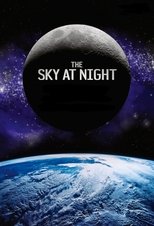
8.3/10
13 votes • HD
People
Cast information is not available for this show.
Episodes

Episode 1 • Apr 24, 1957
Patrick Moore tells you what to look for in the night sky during the coming month. The first of a regular monthly series.

Episode 2 • May 22, 1957
Patrick Moore shows what to look for in the night sky during the coming month.

Episode 3 • Jun 20, 1957
Patrick Moore shows what to look for in the sky during the coming month.

Episode 4 • Jul 25, 1957
Patrick Moore shows what to look for in the night sky during the coming month.

Episode 5 • Aug 19, 1957
Patrick Moore shows what to look for in the night sky during the coming month and discusses telescopes with Henry Wildey.

Episode 6 • Sep 19, 1957
Patrick Moore shows what to look for in the sky during the coming month and talks to Clive Hare, the boy who first saw the New Comet in England.

Episode 1 • Jan 08, 1958
Patrick Moore shows you the wonders of the winter sky during the coming month.

Episode 2 • Feb 05, 1958
Patrick Moore discusses with Dr. Roger Jennison of Jodrell Bank how radio astronomy is increasing our knowledge of the Universe.

Episode 3 • Mar 05, 1958
Patrick Moore discusses the most famous of all the constellations.

Episode 4 • Apr 02, 1958
Patrick Moore talks about the forthcoming penumbral eclipse of the Moon, and Mercury the nearest planet to the Sun.

Episode 5 • Apr 30, 1958
Tonight Patrick Moore is at the Hampstead Observatory. If weather conditions are suitable television cameras will bring live pictures of the moon's surface.

Episode 6 • May 28, 1958
Patrick Moore talks about the largest planet, its family of moons, and its mysterious changing red spot.

Episode 1 • Jan 12, 1959
Patrick Moore describes the life-cycle of a star and compares the Sun's history with that of Betelgeuse, the vast red giant now visible in Orion.

Episode 2 • Feb 09, 1959
Patrick Moore describes the life-cycle of a star and compares the Sun's history with that of Betelgeuse, the vast red giant now visible in Orion.

Episode 3 • Mar 09, 1959
Patrick Moore talks about the forthcoming partial eclipse of the Moon and about the planet Mercury, which is at its most visible period for some time.

Episode 4 • Apr 06, 1959
Patrick Moore and Roger Griffin talk about these pairs of suns revolving round each other, and how they help astronomers to measure the masses of the stars.

Episode 5 • May 04, 1959
Patrick Moore discusses with Dr Harlow Shapley, former Director of Harvard College Observatory and one of the world's leading astronomers, our island of stars in the Universe, of which the solar system forms a minute and insignificant part.

Episode 6 • Jun 10, 1959
Patrick Moore talks about some of the lesser known bodies of the Solar System.

Episode 1 • Jan 20, 1960
Patrick Moore talks about the Andromeda nebula, the most distant object in the heavens it is possible to see with the naked eye, and compares it with what is known of our own galaxy.

Episode 2 • Feb 17, 1960
Patrick Moore talks about the remote and slow-moving planet which was discovered in 1781. Uranus is sixty-four times as large as the earth, and has 65,000 days in its year, which is eighty-four times as long as ours.

Episode 3 • Mar 16, 1960
Patrick Moore explains how the atmosphere interferes with the astronomer's work. He discusses with Dr. Hugh Butler of the Royal Observatory, Edinburgh, how a satellite could be an astronomical observatory.

Episode 4 • Apr 11, 1960
The new comet, Burnham's, is now moving steadily closer to the earth, and should be clearly seen in late April. It will then be in the Northern part of the sky not far from the Pole Star. Patrick Moore talks about this and other comets-where they come from, what they are, and how they move.

Episode 5 • Jun 08, 1960
Patrick Moore talks about the centre of our galaxy, which is so obscured by clouds of dust, gas, and interstellar haze that only radio waves come through with evidence of what lies beyond.

Episode 6 • Jun 11, 1960
Patrick Moore talks about the moons of other planets in the solar system. Some planets have more than one moon and they range in size from tiny globes, twelve miles across, to giants twice as heavy as the Moon.

Episode 1 • Jan 30, 1961
Patrick Moore talks with W.M. Baxter, Secretary of the British Astronomical Association, about the mysterious dark areas, many thousands of miles across, on the sun's surface, known as sunspots. Besides discussing whether these affect the weather, they also consider the effect of solar flares on future manned space-travel. Particles emitted from these may turn out to be one of the worst hazards of all.

Episode 2 • Mar 20, 1961
In this programme, postponed from February, Patrick Moore discusses with Dr. F. L. Jackson, of King's College Hospital Pathology Department, the results of certain experiments carried out specially on behalf of 'The Sky at Night'. In these experiments various living organisms have been subjected to the conditions of atmosphere and temperature which exist on Mars.

Episode 3 • Apr 24, 1961
Following last month's programme on the possibility of life existing on Mars, Patrick Moore discusses whether very low forms of life may be found on the Moon, our nearest neighbour in space and the one most likely to be first reached by man. He also shows viewers the newly published Russian Atlas of the back of the Moon, based on photographs taken by Lunik III.

Episode 4 • May 15, 1961
As the Russian space probe approaches Venus, Patrick Moore discusses the little we know about this planet and what sort of world further exploration might reveal it to be.

Episode 5 • Jun 05, 1961
Frank Hyde has built and operated his own radio telescope at Clacton in Essex. Patrick Moore discusses with him the contributions an amateur can make in this latest field of astronomy.

Episode 6 • Jul 10, 1961
Patrick Moore discusses meteors and meteorites with Dr. M. H. Hey of the British Museum of Natural History, and the latest versions of the suggestion that some may contain organic compounds.

Episode 1 • Jan 17, 1962
Patrick Moore discusses with Gilbert Fielder the age-old problem of what caused the craters on the moon, and whether the next Russian lunik may solve the problem.

Episode 2 • Feb 21, 1962
Patrick Moore discusses with Dr. Francis Jackson bacteriologist of King's College Hospital reports that signs of past life have been found in meteorites They also report on the latest progress of the 'life on Mars' experiments inaugurated last year.

Episode 3 • Mar 14, 1962
Pluto, on the boundary of the solar system, is the planet most remote from the earth. Patrick Moore discusses this strange small world whose mysteries have puzzled astronomers ever since its discovery in 1930.

Episode 4 • Mar 21, 1962
The recent United States attempt to put millions of fine copper wires into orbit round the earth for communication purposes has aroused fierce objections from some astronomers. Patrick Moore discusses this controversial subject with Colin Ronan.

Episode 5 • May 23, 1962
Is space empty? Astronomers used to think so, but nowadays it is believed there is matter spread out between the stars so that we look out through a sort of cosmic fog. Patrick Moore talks about what astronomers have learned by studying this matter.

Episode 6 • Jun 27, 1962
Every year many people watch the midsummer sun rise over the avenue at Stonehenge. Patrick Moore discusses how much the ancient peoples knew of astronomy and how far the old Stone Circles of Britain were aligned astronomically.

Episode 1 • Jan 23, 1963
1963 promises to be an exciting year for astronomy and space exploration. Patrick Moore forecasts some of the possible highlights.

Episode 2 • Feb 20, 1963
A Russian astronomer has suggested that the two moons of Mars might be artificial space stations. Patrick Moore discusses the peculiarities of the Red Planet's satellites and considers whether they might be used as staging points for future manned exploration of Mars.

Episode 3 • Mar 20, 1963
Patrick Moore and Howard Miles Director of the Artificial Satellite Section of the British Astronomical Association discuss the American space probe Mariner II and its remarkable new findings about the planet Venus.

Episode 4 • Apr 14, 1963
Patrick Moore talks about the exploding star or nova in the constellation of Hercules which was recently discovered by an amateur astronomer in Sweden, and discusses the sequence of events which leads to these tremendous celestial catastrophes.

Episode 5 • May 17, 1963
Patrick Moore discusses with Anthony Michaelis how over the years many writers' fantasies, like Bishop Godwin's voyage to the Moon of A.D. 1657, are now becoming reality, and whether other favourite theories of science fiction - anti-gravity, for instance - may in turn become fact.

Episode 6 • Jun 12, 1963
American astronomers have just reported the discovery of a planet moving round a near star. It is now believed that similar planet families must be common in space. Patrick Moore discusses the latest theories about how planets come into being.

Episode 1 • Jan 10, 1964
Patrick Moore talks about some of the strange celestial objects, like the planet Vulcan, which have been reported at times but do not in fact seem to exist.

Episode 2 • Feb 07, 1964
Frank Hyde discusses with Patrick Moore the progress of his radio-astronomy station's observations in collaboration with Florida State University to try to determine whether the radio emissions from Jupiter originate there or are reflected from the sun.

Episode 3 • Mar 06, 1964
The recent flight of Ranger VI came near to solving the age-old problem of the nature of the Moon's surface. Patrick Moore reports on the present situation and its significance to astronomers.

Episode 4 • Apr 03, 1964
For ages man has used the stars to navigate by Patrick Moore discusses with Henry Brinton some of the new problems of celestial navigation which the space traveller has to face.

Episode 5 • May 01, 1964
The Armagh Observatory in Northern Ireland is the oldest observatory still in use in the Commonwealth. Yet the work being done there on the structure of galaxies is in the forefront of contemporary research. Dr. E. M. Lindsay, the director, describes the Observatory's activities to Patrick Moore, as well as showing him round the eighteenth-century building and its historic possessions.

Episode 6 • Jun 05, 1964
Patrick Moore reports on the New York International Symposium on the Structure of the Moon's Surface, at which he himself read one of the technical papers.

Episode 1 • Jan 15, 1965
Patrick Moore discusses the atmospheres of the other planets in the solar system, how much is known of them, what more is likely to be found out about them in the near future, and whether one day man will be able to survive them.

Episode 2 • Feb 12, 1965
The advantages, drawbacks, and achievements of using balloons to take astronomical instruments above the earth's atmosphere are discussed by Patrick Moore and Kenneth Fea of the Space Research Group, University College, London.

Episode 3 • Mar 12, 1965
Patrick Moore discusses what information the photographs taken by Ranger 8 may give on the controversial question of the nature of the moon's surface.

Episode 4 • Apr 02, 1965
Patrick Moore examines the ancient mythology of the stars and some of the ways in which they have been said to influence man's destiny on earth.

Episode 5 • Apr 30, 1965
Patrick Moore and Henry Brinton discuss how much useful observation can be done without using optical instruments.

Episode 6 • Jun 04, 1965
Recent studies suggest that the day on Mercury may be two months long. Patrick Moore discusses how this affects our ideas of conditions on Mercury, and how its length of day compares with that of other planets.

Episode 1 • Jan 14, 1966
Patrick Moore discusses with Frank Hyde whether the radio emissions from Jupiter, which have been puzzling many astronomers, can be related to the movements of Jupiter's moons.

Episode 2 • Feb 11, 1966
On Christmas Eve the first meteorite to fall on British soil for many years exploded over the village of Barwell in Leicestershire. Patrick Moore discusses with experts and eye-witnesses its possible origin and nature.

Episode 3 • Mar 11, 1966
The recent successful landing of the Russian space probe Luna-9 on the moon has brought nearer the possibility of a manned landing there. Patrick Moore discusses the latest information, and speculates about the future.

Episode 4 • Apr 12, 1966
Is Astronomy a good basis for further education? Patrick Moore discusses with Professor A J. E. Ingram and Dr. R. C Maddison the Keele University practice of introducing all first-year students to astronomy, and the use they make of the University Observatory and telescopes.

Episode 5 • May 06, 1966
On May 20 there will be a partial eclipse of the sun, visible from Great Britain. Patrick Moore talks about eclipses and explains what will be seen on that day.

Episode 6 • Jun 03, 1966
Since Greenwich Observatory was founded in 1675 there have been eleven Astronomers Royal. Sir Richard Woolley, the present one, talks about the sometimes brilliant, sometimes eccentric characters of his predecessors. Introduced by Patrick Moore.

Episode 1 • Jan 06, 1967
At present the most brilliant object in the evening sky is Jupiter, giant planet of the Solar System - an immense world with cloud belts, the fascinating Great Red Spot. and four bright moons. Even a small telescope will show details upon its yellowish gaseous surface. Patrick Moore talks about Jupiter, and the many problems that it presents to modern astronomers.

Episode 2 • Feb 03, 1967
Well over a thousand artificial satellites are now in orbit round the earth, and some can be seen as bright lights crossing the stars. Patrick Moore talks to Desmond King-Hele, F.R.S. about the way amateur observers can sight and track satellites, and about the value of these observations to space research.

Episode 3 • Mar 03, 1967
Patrick Moore and Dr. V. Barocas talk about the nebulae - clouds of gas of many kinds far out in space. In some of these, new stars are coming into existence.

Episode 4 • Mar 31, 1967
Close-up photographs of prospective lunar landing-sites are rapidly increasing our knowledge of the moon's surface. But how strong is the evidence that the lunar craters were formed by the same kind of volcanic activity as Earth calderas? Patrick Moore puts this question to a geologist, Dr. G.J.H. McCall.

Episode 5 • Apr 23, 1967
On the programme's tenth anniversary, Patrick Moore describes the enormous advances made in astronomical studies during the space-decade since April 1957. He shows highlights from past programmes, including the first photographs of the far side of the moon in 1959 and the solar eclipse tracked across Europe in 1961.

Episode 6 • May 26, 1967
Since the American rocket Mariner IV went close to Mars to send back information, our ideas about the Red Planet have changed very much. Patrick Moore discusses these new ideas with Harold Ridley and in particular considers whether there can be any life on Mars.

Episode 1 • Jan 05, 1968
The enthusiasm of astronomers makes them build observatories at their own homes. Tonight Patrick Moore looks at three home-built observatories, including his own, which he has successfully transferred to Northern Ireland. Not all are built for the same purposes.

Episode 2 • Feb 02, 1968
Leap Year makes this a special month-but variations in earthly calendars are slight compared with those in other worlds. In tonight's programme, Patrick Moore talks about Uranus's 65,000-day year, Jupiter's 'year', twelve times as long as ours but with a 'day' of less than ten hours, and Venus's 'year', which seems shorter than its 'day'.

Episode 3 • Mar 01, 1968
The Armagh Planetarium-the first big public planetarium to be built in Britain outside the London area-was opened to visitors on February 5. Its Director, Patrick Moore, shows viewers round and describes its principles and uses.

Episode 4 • Mar 29, 1968
Patrick Moore discusses with Iain Nicolson the sooty clouds in space which hide some stars and themselves shine in the light from others.

Episode 5 • Apr 26, 1968
Patrick Moore discusses with Michael Bentine the problems of manned flight beyond the Moon to the planets and stars. They examine the techniques devised in fiction and in fact to solve some of these problems.

Episode 6 • May 24, 1968
In three weeks' time the asteroid Icarus, first seen in 1949, orbits close to the Earth. Patrick Moore talks to Dr. Vinicio Barocas about the nature and movements of the asteroids.

Episode 1 • Jan 27, 1969
Man has just taken his first close look at the moon, and in a few months American spacecraft are expected to bring back samples of the moon's crust for analysis. At this turning point in lunar research, as the long history of earth-based observation gives way to first-hand experience, Patrick Moore sums up our present knowledge; Raymond Baxter discusses the significance of the new developments with Sir Bernard Lovell, Professor J.G. Davies, and Dr. J.H. Thomson at Jodrell Bank; and Patrick Moore describes the optical work done at the world's highest observatory, the Pic du Midi. Sequences in France made available by courtesy of the French Television Service

Episode 2 • Feb 24, 1969
Without a telescope can you see the phases of Venus? The little star Alcor? The Great Nebula in Andromeda? Patrick Moore discusses what can or cannot be seen without telescopes and invites viewers to join in an experiment.

Episode 3 • Mar 24, 1969
Jupiter is specially brilliant this month, but it is so remote that many of its mysteries are still unsolved. Patrick Moore discusses them with Terence Moseley Two bright planets are in the evening sky now. Venus is in the west, and at present two Russian spacecraft are on their way there. In this evening's The Sky at Night Patrick Moore gives the results of the investigation into whether anyone can see the crescent shape of Venus with the naked eye-which may help to clear up the mystery of the old references to 'the horned Venus.' Attention is then turned to the other brilliant planet, Jupiter—, the giant of the sun's family, with its belts, moons, and strange Red Spot. Patrick Moore is joined by Terence Moseley to discuss this remarkable world which is always changing; large enough to hold more than 1,000 earths, it is a fascinating object when seen through even a small telescope, if only because one never knows what to expect next!

Episode 4 • Apr 21, 1969
Is it unlucky to see the new moon through glass? The moon has always been thought to have a powerful influence on the earth, causing not only tides but also good luck, bad luck, and even lunacy, according to its phases. Patrick Moore discusses with Henry Brinton, Bert Foord, weatherman and Dr. J. T. Hutchinson, a psychiatrist the scientific truths and popular superstitions about the moon's effects on the earth.

Episode 5 • May 19, 1969
Two American spacecraft will fly past the planet Mars this summer and send back information which may help to answer the long-debated question, 'Is there life on Mars?' Patrick Moore discusses the latest Martian experiments with a biologist, Keith Reid.

Episode 6 • Jun 16, 1969
Unique scientific observations are made on the rare occasions when Venus 'transits' - or crosses - the sun. Tonight's programme marks the bicentenary of Captain Cook's voyage to the South Pacific to observe a transit - on June 3, 1769 - during which he claimed Australia for Britain on his way home. Patrick Moore talks to Cdr. Derek Howse, R.N. about Cook's voyage and to Dr. Vinicio Barocas about the first astronomer ever to observe a transit, in 1639 - a twenty-year-old Lancashire curate, the Rev. Jeremiah Horrocks

Episode 1 • Jan 12, 1970
In January a comet will be visible in the northern sky, bright enough to be seen without a telescope. Patrick Moore talks about comets and their appearances with an observer, Keith Hindley, and about Sir Edmund Halley - discoverer of Halley's Comet - with Colin Ronan.

Episode 2 • Jan 27, 1970
The constellation of Orion the Hunter is conspicuous in the southern sky. Patrick Moore talks about its many fascinating features, among them white giant stars, the old red giant Betelgeuse, and the gas-cloud where fresh stars are being formed.

Episode 3 • Feb 24, 1970
In the year 1054 a new star, or Supernova, appeared. It was a star so brilliant that it rivalled Venus and was said to be visible in daylight. It was two years before it faded away. Modern astronomers now know that this was the explosion that produced the Crab Nebula. Tonight Patrick Moore talks to Dr Vinicio Barocas about the Crab Nebula and its mysteries.

Episode 4 • Mar 23, 1970
The Apollo 11 and 12 astronauts brought back colour photographs which have given valuable information about the moon's surface and geology. Soon the Apollo 13 crew will be photographing the rugged uplands of the Fra Mauro crater. But there are special problems in taking photographs on the moon, and tonight Patrick Moore discusses these with H. J. P. Arnold.

Episode 5 • Apr 28, 1970
On 9 May the tiny planet Mercury will be seen as a black dot in transit across the sun's disc. Because it orbits close to the sun, Mercury has always been difficult to observe, and astronomers can only guess at the nature of this planet. Patrick Moore explains how a spacecraft will fly past Mercury in 1973 and send back television pictures.

Episode 6 • May 26, 1970
Patrick Moore examines the telescopes at Frank Acfield's back-garden observatory in Newcastle. Amateur astronomers - whether they have sophisticated equipment or simply use small telescopes or binoculars - can find out what is visible in the sky at night during the summer and where to find it.

Episode 1 • Jan 13, 1970
Mars has now started to approach the Earth. Later in 1971 it will be as close to us as it can ever come. More Mariner spacecraft will be sent there, and Patrick Moore looks ahead to see what new information they are likely to bring us from this puzzling world.

Episode 2 • Feb 03, 1971
Our view of the Universe is always out of date! We see the Moon as it was over a second ago, the Sun 81 minutes ago, and remote star systems as they used to be before the Earth was formed. Patrick Moore explains why we can never see the universe 'now.'

Episode 3 • Mar 03, 1970
Patrick Moore and Dr Vinicio Barocas discuss this star and its strange companion, a body so dense that one thimbleful of its material would weigh a ton.

Episode 4 • Apr 01, 1971
Patrick Moore discusses with Professor Samuel Tolansky a startling new theory about an 'invisible' star in the two-star system Epsilon Aurigae. Could this mysterious object be, not an ordinary star at all, but a 'collapsar' or collapsed star within a black hole moving through the galaxy?

Episode 5 • Apr 27, 1971
Only two planets are known to have magnetic fields: the Earth itself, and Jupiter the huge cold outer planet full of mysteries which have puzzled astronomers for centuries. Patrick Moore discusses with Dr Raymond Hide the significance of Jupiter's radio signals, and what we may learn from the probes which will fly past it in a few years' time.

Episode 6 • Jun 08, 1971
The Russian Soyuz flights and America's planned launching of a manned Skylab in 1973 are steps towards the establishment by the 1980s of permanent observatories outside earth's atmosphere. As well as making observations of the sun, a purpose of the first Skylab is to solve the problem of enabling crews to work efficiently during long periods of weightlessness. Patrick Moore discusses this problem With Wing Cmdr. Tony Nicholson and explains how such observatories will help astronomers to see further into outer space.

Episode 1 • Jan 05, 1972
The Great Bear is the most familiar and conspicuous star-pattern in the night sky all the year round: but it is not exactly what it seems. Patrick Moore explains that, although its seven stars look close together, some are further from each other than they are from Earth.

Episode 2 • Feb 02, 1972
The first X-ray source far out in space was detected nine years ago. Since then, 100 more have been found. But what are they? Patrick Moore talks to Professor Peter Willmore and Dr Kenneth Pounds about a recent successful British experiment to track down one of these mysterious sources by using rockets.

Episode 3 • Mar 01, 1972
Mars could have water and life. This is the astonishing information now coming back from the Mariner 9 orbiting probe. Patrick Moore discusses the evidence in the latest photographs with a geologist, Dr Peter Cattermole, and explains the significance of these revelations. Have you a question about astronomy you would like to ask Patrick Moore? In the next Sky at Night on 27 March he will answer as many as he can in the time available. Send your questions - on a postcard - to: The Sky at Night, [Address removed]. Sorry, Patrick Moore cannot reply to questions not included in the programme.

Episode 4 • Mar 27, 1972
What is a neutron star? a quasar? a pulsar? a black hole in space? Patrick Moore answers your questions.

Episode 5 • Apr 12, 1972
The Sky at Night with Patrick Moore started on 24 April 1957. In tonight's special edition, Patrick Moore looks back, with Commander Henry Hatfield, at the astonishing changes and advances in astronomical knowledge since 1957. He discusses recent developments in 'invisible astronomy' with Professor Anthony Hewish, whose team discovered the first pulsar, and with infra-red astronomer Professor Jim Ring. Finally, he looks forward to the discoveries we can expect in the next 15 years.

Episode 6 • May 24, 1972
Patrick Moore explains why Planet X has been so difficult to detect, and what kind of place this dim, cold world at the limits of our solar system would be.

Episode 1 • Jan 08, 1973
Patrick Moore looks forward to a year of spectacular astronomical events: the launching of the Sky-lab earth-orbiting laboratory in May; the longest eclipse of the century in June; the first dual-planet probe to Venus and Mercury in October; and the Copernicus quincentenary celebrations.

Episode 2 • Feb 07, 1973
From his Selsey observatory, Patrick Moore illustrates what amateur astronomers can achieve, and shows the planet Saturn.

Episode 3 • Mar 19, 1973
Patrick Moore talks about Sirius the Dog-Star, the brightest star in the sky and one of the nearest to us, and about its white dwarf companion Sirius B. (Patrick Moore's new opera Perseus discussed in Scan: Thurs 8.45 pm R4)

Episode 4 • Apr 02, 1973
The longest solar eclipse of the century, lasting over seven minutes, will take place in Africa on 30 June. Patrick Moore talks about some of the exciting experiments which will be carried out by solar observers who will be in - or above - the Sahara during the eclipse.

Episode 5 • Apr 30, 1973
Patrick Moore discusses with Gordon Taylor and Dr David Allen new ways of measuring objects in our solar system.

Episode 6 • Jun 04, 1973
Ancient astronomers described Sirius the Dog-Star as red: but what colour is it today? A few weeks ago, Patrick Moore asked viewers to tell him what colour they see Sirius, and now he analyses the thousands of reports he received, and explains the significance of the colours of stars.

Episode 1 • Jan 27, 1974
Patrick Moore talks about what is on view in the night sky now, and discusses with Gilbert Satter thwaite the important subject of positional astronomy - the exact measurements and movements of celestial objects.

Episode 2 • Feb 17, 1974
Saturn is now very well placed in the evening sky, and a small telescope will show its ring system as well as some of the moons. Patrick Moore and Dr Garry Hunt examine the recent results showing that its largest satellite, Titan, has a thick atmosphere, and discuss the Saturn space-probe now being planned.

Episode 3 • Mar 20, 1974
The Milky Way, made up of countless faint stars, can easily be seen in the evening sky this month. Tonight Patrick Moore describes this luminous band which stretches from one horizon to the other, and explains how it forms part of the huge Galaxy of stars in which we live. The latest news will also be given of Mariner 10, the space probe now nearing Mercury, which on 29 March should send back the first close-range pictures of the planet's surface.

Episode 4 • May 15, 1974
How strong is the possibility of life existing in other worlds in our galaxy and elsewhere in the universe, and if it does, where is the nearest life likely to be and how could we communicate with it? Patrick Moore discusses this with Professor Carl Sagan , director of planetary studies at Cornell University in New York.

Episode 5 • Jun 12, 1974
The Sun is the only star near enough for us to study in detail. Patrick Moore discusses with Dr Ron Maddison the mysterious cycles of activity which cause spots and vast looped prominences to appear on the sun's surface.

Episode 6 • Jul 10, 1974
Patrick Moore describes the Red Giant star, Antares, in the constellation of Scorpio. It is now visible above the southern horizon; and although it looks like a dot, it is bigger than the orbit of the Earth round the Sun.

Episode 1 • Jan 06, 1975
Patrick Moore talks about this most splendid of constellations.

Episode 2 • Feb 06, 1975
Patrick Moore discusses plans for the new Northern Hemisphere laboratory with Dr Graham Smith , director-designate of the Royal Greenwich Observatory.

Episode 3 • Mar 05, 1975
Algol, the Demon Star, is now well on view during the evening. Every two-and-a-half days the star seems to give a long, slow ' wink.' Patrick Moore describes this remarkable eclipsing binary and explains its importance.

Episode 4 • Apr 10, 1975
Astronomy of the infra-red is now vitally important in studies of the planets, the stars and the universe as a whole. Patrick Moore talks about infra-red astronomy to Professor Jim Ring, of Imperial College.

Episode 5 • Apr 30, 1975
This month the three outermost planets - Uranus, Neptune and Pluto - are all on view, even though they are faint. Each has its own special points of interest; and Patrick Moore talks about these remote members of the Sun's family.

Episode 6 • May 30, 1975
A strange force of X-rays from the sky has been discovered by instruments on board the British satellite Ariel-5. What is the object sending them out?

Episode 1 • Jan 21, 1976
The planet Mars is brilliantly visible in the sky at the moment. It has always been regarded as the one planet beyond earth upon which life might exist, and in 1976 we could find out at last. Two American rockets, the Vikings, are now on their way to the Red Planet, and should land there next summer, transmitting information from the Martian surface. Patrick Moore and Dr Garry Hunt look forward to what the Viking probes may tell us.

Episode 2 • Feb 18, 1976
Everyone has heard of the Pole Star - but how many people can find it, or know its importance? From his observatory at Selsey, Patrick Moore talks about this huge, remote sun which has served to guide navigators for so many centuries.

Episode 3 • Mar 18, 1976
What is a Black Hole? Nobody can yet be sure; it may be the final state of a very massive star which has collapsed, surrounding itself with a ' forbidden zone' from which not even light can escape. Patrick Moore discusses these remarkable objects, which have become so important in modern astronomy, with lain Nicolson of Hatfield Polytechnic Observatory.

Episode 4 • Apr 21, 1976
The rings, easily visible with a small telescope, are now better displayed than they will be for some years to come. Patrick Moore talks about Saturn and describes what the American spacecraft Pioneer 11 may tell us when it by-passes the ringed planet in 1979.

Episode 5 • May 20, 1976
The Sun sends us its light and heat, but it has many other effects on the earth too. It raises tides; it produces the lovely Polar lights; it has long-term effects on plant growth - and its variations may even cause ice ages. Patrick Moore and Dr Ron Maddison of Keele University discuss some of these lesser-known effects of the Sun on the Earth.

Episode 6 • Jun 14, 1976
Pulsars are among the most incredible objects known to man. They are composed of neutrons and are so dense that a pin's head of neutron star material would weigh as much as an ocean liner. Discovered as recently as the late 60s, neutron stars are of great and increasing interest to astronomers and valuable information on X-ray pulsars has been obtained from the instruments aboard the British satellite, Ariel 5. Patrick Moore talks about pulsars to Jocelyn Bell Burnell who was involved in their discovery.

Episode 1 • Jan 17, 1977
Sirius is now at its best in the evening sky. It is one of our nearest stellar neighbours, and is much more luminous than the sun. It seems to flash all colours but is really a white star, it has a strange, super-dense White Dwarf companion. Patrick Moore and lain Nicolson discuss some of the questions associated with Sirius.

Episode 2 • Feb 17, 1977
How big is the universe - and does it have a boundary? Distances on the astronomer's scale are very hard to appreciate. Patrick Moore and Dr Ron Maddison discuss them in this programme, and explain how to describe them in everyday terms.

Episode 3 • Mar 16, 1977
First detailed photographs of Mercury, the innermost planet, were obtained by the American space-probe Mariner 10. Maps of Mercury have been drawn from these photographs by Arthur Cross and in this programme he joins Patrick Moore to explain how the maps were made and what they have told us.

Episode 4 • Apr 20, 1977
In April 1957 The Sky at Night began. It could not have started at a better time; within months the Space Age opened, with the launch of Sputnik 1, and over the next few years astronomy saw some of the most spectacular advances of all time. Today, 20 years later, men have visited the moon; rockets have flown past the planets and even landed on some of them; new giant telescopes have probed further into the universe than Man has ever done before, and each year brings its new quota of discoveries. Every month, since April 1957, The Sky at Night has presented the changing scene. In this 20th anniversary programme Patrick Moore discusses the past and the future with some of Britain's leading figures in astronomy.

Episode 5 • May 18, 1977
Sunspots are known to increase and decrease over an 11-year cycle. We have just passed through a period of minimum solar activity and the sun-spots should now be increasing, but are slow to do so. Patrick Moore and Dr Ron Maddi son discuss the possible causes of this apparent irregularity. in the solar cycle, and talk about some of the other interesting features of the sun's surface.

Episode 6 • Jun 15, 1977
For centuries the ringed planet Saturn has been regarded as unique. This year the startling discovery has been reported that Uranus also has a system of rings - though as yet they have not been seen directly. Patrick Moore discusses this new development with Gordon Taylor, of the Royal Greenwich Observatory. who has made special studies of Uranus, and Dr Garry Hunt, who is closely involved with plans for Voyager, the unmanned space-craft due to bypass Uranus in the 1980s.

Episode 1 • Jan 11, 1978
Good astronomical telescopes are very expensive today, but there are many objects in the night sky which can be viewed with binoculars. For example, during winter evenings the constellation of Orion is excellently placed, and it contains the lovely nebula which binoculars show quite clearly. Patrick Moore describes this and other features of the night sky, and gives advice on the types of binoculars which are most useful.

Episode 2 • Feb 08, 1978
What is the most remote object ever visible with the naked eye? The answer is: the Great Spiral in Andromeda, which is a member of our Local Group of galaxies, but is still very remote - its light takes over two million years to reach us. The Local Group is now known to contain over 25 members, some of which are huge systems while others are dwarf galaxies. Patrick Moore talks about the Local Group to Heather Couper , lecturer at the Caird Planetarium, Greenwich.

Episode 3 • Mar 08, 1978
The Viking space-probes have been operating on Mars for almost one Martian year (nearly two Earth years). We do not yet know whether life in any form exists there but many scientific discoveries have been made. Patrick Moore talks to Professor Geoffrey Eglinton and Dr Garry Hunt.

Episode 4 • Mar 27, 1978
Ever since the days of Jules Verne and H. G. Wells, science fiction and space exploration have been closely linked, and over the last 100 years science fiction has often become science fact. Patrick Moore talks to Arthur C. Clarke, the science fiction writer, who describes himself as an armchair astronaut, and Michael Bentine, best known as a humorist, but who is also a serious and dedicated scientist.

Episode 5 • Apr 04, 1978
The asteroids or minor planets are among the most interesting of the junior members in the Solar System. Only one - Vesta - is ever visible without a telescope, but thousands are now known to exist; some swing near the Earth, and several close approaches have been recorded. In this programme Patrick Moore discusses the origin and nature of the asteroids, and Gordon Taylor, of the Royal Greenwich Observatory, describes his ingenious method of measuring their sizes.

Episode 6 • May 17, 1978
How is a star born? We believe that with our telescopes we can see where fresh stars are being created. In this programme Patrick Moore talks about stellar birth, how a star develops and how every star, including our sun, must eventually die.

Episode 1 • Jan 10, 1979
In December, six American and two Russian space-craft reached Venus. With its dense atmosphere, its searing hot surface and its clouds of deadly sulphuric acid, this strange planet is overwhelmingly hostile; but it is of tremendous interest. Patrick Moore and Dr Garry Hunt talk about the findings of the space-ships, and discuss what will happen next in the exploration of Venus.

Episode 2 • Feb 05, 1979
All astronomers know of the catalogue of star-clusters and nebulae compiled 200 years ago by Charles Messier ; and ' hunting the M objects' is a favourite amateur pastime. Tonight Patrick Moore describes Messier and some of the objects which he listed.

Episode 3 • Mar 08, 1979
Most scientists believe that intelligent life is common in the Universe. But the creation of life requires special conditions, which could be much less frequent than is usually thought. Patrick Meore talks to Professor Sir Bernard Lovell who believes that life elsewhere, in the Universe is likely to be extremely rare.

Episode 4 • Apr 04, 1979
Is space empty? Astronomers used to think so, but it is now known that there is a tremendous amount of material spread between the stars. Even complex molecules are found there. This discovery has had a great influence upon our ideas about the formation and life-stories of the stars. In this programme Patrick Moore and Dr John Beckman, of Queen Mary College, talk about the developments which have taken place during the past five years.

Episode 5 • May 02, 1979
When Voyager 1 flew past Jupiter in March of this year, it sent back results which surprised even the space-planners. The famous Red Spot was shown as a huge whirling storm, while one of the satellites, Io, a world larger than our Moon, has a brilliant red surface upon which active volcanoes can be seen. Patrick Moore and Dr Garry Hunt discuss Voyager l's remarkably successful mission.

Episode 6 • May 30, 1979
'Is it going to rain today?' 'Will it be a sunny weekend? ' The British are famous for discussing the weather. Its vagaries are part of our lives, and we all watch the forecasts. 1957 saw the start of the space age, and since then space probes have not only provided information about other planets in the solar system, but they have also studied the atmosphere and weather on Earth itself. Recently, more elaborate satellites have produced the clear pictures we see on television forecasts. Patrick Moore talks to Michael Fish about how these satellites in space have revolutionized weather forecasting.

Episode 1 • Jan 10, 1980
How many people know the meaning of terms such as ' right ascension' and ' declination '? And what exactly is the celestial sphere? Mapping the sky presents problems different from those of mapping the earth. Patrick Moore talks about sky-maps, and how astronomers have worked out their own equivalent of latitude and longitude.

Episode 2 • Feb 07, 1980
Saturn is generally regarded as the most beautiful object in the sky, but this year it has an unusual appearance. For the first time since 1966 the rings are edgewise-on to the Earth, and even large telescopes will show them as no more than a slender line of light. Paul Doherty, an enthusiastic observer of Saturn, joins Patrick Moore to talk about the interesting features of Saturn which can be seen when the rings are almost invisible.

Episode 3 • Mar 20, 1980
Exactly 50 years ago, in 1930, the planet Pluto was discovered by a young research student named Clyde Tombaugh. Since that time Pluto has set puzzle after puzzle. It is smaller than expected; it has an unusual path: and it has a moon, Charon, which is one-third the size of itself. Today, at the age of 77, CLYDE TOMBAUGH is one of America's most respected astronomers. For this programme Patrick Moore flew to Arizona to meet Professor Tombaugh and to ask him what he now thought about the curious planet he discovered half a century ago.

Episode 4 • Apr 17, 1980
On the summit of Mount Hopkins, in Arizona, is the world's most revolutionary observatory, containing the multiple mirror telescope. Instead of one great mirror, there are six all working together and controlled by a laser beam. Patrick Moore visits the observatory, and looks at this remarkable new telescope.

Episode 5 • May 13, 1980
What lies at the centre of our galaxy? Are there masses of brilliant stars, or is there something even more significant, such as a Black Hole which is swallowing up any stars which move too close to it? Patrick Moore and Heather Couper explore this mystery.

Episode 6 • Jun 10, 1980
The Solar Telescope ' Kitt Peak, in Arizona, is America's national observatory. One of its most important instruments is the ingeniously-designed telescope used for studying the sun. Patrick Moore visits Kitt Peak , to see this remarkable telescope and talk to the scientists who are carrying out research with it.

Episode 1 • Jan 11, 1981
Palomar Patrick Moore visits Mount Palomar in South California to see the great 200-inch telescope, and talks to the scientists who use the largest working telescope in the world.

Episode 2 • Feb 08, 1981
The Orion nebula is one of the most famous objects in the sky. It is visible with the naked eye as a hazy patch in Orion's sword; small telescopes show it well, but we now know that it is only part of a vast mass of gas and dust in which fresh stars are being born, Inside it are some remarkable objects whose nature is still uncertain. One of the astronomers who is carrying out research into these fascinating mysteries is Dr John Beckman, who talks to Patrick Moore about the latest news from this 'stellar birthplace'.

Episode 3 • Mar 08, 1981
Patrick Moore tells the story of William Herschel, the obscure Hanoverian army bandsman whose discovery with a home-made telescope of the planet Uranus doubled the size of the known solar system. Herschel was hired to provide 'astronomical entertainment' for the British Royal Family and King George III gave him £4,000 to build the world's largest telescope in a garden at Slough.

Episode 4 • Apr 05, 1981
What can be seen in the night sky this month? Patrick Moore describes the stars which are on view during April; he also shows the latest maps of Saturn's satellites drawn up from Voyager I pictures, and discusses the recent discovery of three galaxies so remote that their light takes about 10,000 million years to reach us.

Episode 5 • May 03, 1981
In the crystal-clear atmosphere of La Palma in the Canary Islands the new Northern Hemisphere Observatory is being built. This observatory, a joint international project, is designed to study galaxies so remote that their light takes thousands of millions of years to reach us, leading us on to a real knowledge of the way in which the universe was born. One of the scientists involved is Professor F. Graham Smith , Director of the Royal Greenwich Observatory, who talks to Patrick Moore.

Episode 6 • May 31, 1981
Neptune, the outermost of the giant planets, has been known for well over a century, but our knowledge of it is still meagre. With its gaseous surface, its quick rotation and its large satellite, Triton, it is of tremendous interest. Patrick Moore and Dr Garry Hunt discuss what is known about Neptune and what future researches may tell us when Voyager 2 passes this ' outermost giant' in 1989.

Episode 1 • Jan 10, 1982
Yesterday evening there was a lunar eclipse. The moon passed fully into the earth's shadow from 7.15 until 8.35 pm and the eclipse should have been seen well from all over Britain and, weather permitting, from the special camera on top of Television Centre. Patrick Moore talks about eclipses, and describes some of the other features of the January night sky.

Episode 2 • Feb 07, 1982
Venus has always been a planet of surprises, and very recently the Pioneer spacecraft orbiting the planet have provided some more. There is evidence of current active volcanoes, very similar to those on Earth, and it seems that in the distant past (when the Sun was cooler than at present) Venus may have sustained life, only for it to be destroyed as the Sun grew hotter, changing the 'Planet of Love' into an inferno. Patrick Moore discusses how our knowledge of Venus has changed in view of these exciting new discoveries.

Episode 3 • Mar 14, 1982
Close to the brilliant star Capella, in the constellation of Auriga, there is a particularly interesting star, Epsilon Aurigae. We know it is made up of two stars, but we can only see one directly. The mysterious companion is invisible, but can be detected by infra-red. It may be the largest star known to science-or, just possibly, it might be what is known as a 'black hole'. This summer the companion is due to pass in front of the visible star, so that astronomers will be doing all they can to find out just what it really is. Patrick Moore talks to Heather Couper who has made a special study ef this strange object.

Episode 4 • Apr 04, 1982
During evenings in April three bright planets-Mars, Jupiter and Saturn - are very conspicuous, with Venus still prominent in the east before dawn. Patrick Moore explains how these planets move, sometimes apparently ' looping the loop', and gives details of the latest Russian flights to Venus as well as describing the spring stars and constellations.

Episode 5 • Apr 25, 1982
In this special programme to mark the 25th anniversary of The Sky at Night, Patrick Moore reports on what's happening at great observatories all over the world; he talks to space researchers and 'ground-based' astronomers, and his journey round the world took him from the top of Mauna Kea, at 14,000 feet above sea-level, to one mile down a goldmine in South Dakota. This is a report not only upon what has happened in the past, but also a look ahead to the future, with the Space Telescope and other developments undreamed of when the first Sky at Night was transmitted.

Episode 6 • May 16, 1982
Astronomers in Australia have just discovered an object which may be the most remote and luminous known to man. It is a quasar, apparently 13,000 million light years from us. Yet some astronomers have their doubts and believe that there have been serious errors in interpretation. Patrick Moore talks about the quasar problem and sums up what we have so far found out about these remarkable objects.

Episode 1 • Sep 09, 1983
The winter stars are more brilliant than those of any other season. Orion dominates the scene, together with his brilliant retinue. Two particularly interesting stars are visible; the Twins, Castor and Pollux - Pollux an orange giant and Castor a sort of stellar family, made up of no fewer than six sans. Patrick Moore talks about these unusual stars and gives the latest news about developments at the new observatory in La Palma and about the approach of Halley's Comet.

Episode 2 • Feb 06, 1983
A week ago IRAS, the Infra-red Astronomical Satellite, was launched and is now moving round the Earth at a height of 560 miles. It will provide new information about objects ranging from super-giant stars, to the mysterious centre of our Galaxy. Patrick Moore talks about this exciting new project.

Episode 3 • Mar 06, 1983
Mauna Kea, in the Hawaiian Islands, is almost 14,000 feet high. At its summit the air is thin and the skies are clear-which is why some of the world's largest telescopes have been set up there. Patrick Moore pays it a visit.

Episode 4 • Apr 10, 1983
Patrick Moore talks about a strange pulsar to the Astronomer Royal, Professor Graham Smith.

Episode 5 • May 08, 1983
A mile below the Black Hills of Dakota lies a huge tank of cleaning fluid deep inside a gold mine - the world's strangest observatory. It is designed to collect neutrinos sent out by the sun. But what do we really know about the sun? Some of our long-cherished theories seem to be wrong. Patrick Moore visits this unusual observatory and talks to Drs Raymond Davis and Keith Rowley about the results of their work.

Episode 6 • Jun 05, 1983
The stars, many far bigger than our ' star the sun, are many millions of miles away and appear only as specks of light. Until recently it had been impossible to see any details of the stars. But thanks to a new technique called 'speckle interferometry' this can be done for the first time. Patrick Moore discusses the remarkable results with Professor Alec Boksenberg , Director of the The Royal Greenwich Observatory, Herstmonceux.

Episode 1 • Jan 08, 1984
Winter is perhaps the best time for star-gazing; the nights are long and dark. Also the winter constellations, led by Orion the Hunter, are brilliant. Patrick Moore talks about the winter Sky at Night and points out some objects which can be seen with binoculars or a small telescope.

Episode 2 • Feb 05, 1984
British astronomy has always been in the forefront of research. This is still true today, though the largest optical telescopes have been moved to sites with better climates, such as La Palma and Hawaii. The organisation, together with the development and testing of new equipment, is still carried out largely at the Royal Greenwich Observatory, Herstmonceux. In this programme Patrick Moore talks to Professor Alec Boksenberg , Director of the Royal Greenwich Observatory, and other scientists about these important new developments, in which British astronomers are so deeply involved.

Episode 3 • Mar 11, 1984
For the past few months Venus has been a brilliant object in the morning sky. Though we cannot see through its dense, unbreathable atmosphere, space probes have sent back remarkable pictures, and using infra-red techniques, the Anglo-Australian Observatory has taken pictures of the dark side. Patrick Moore talks to Dr Peter Cattermole of Sheffield University about this fascinating world.

Episode 4 • Apr 01, 1984
The stars are suns; they have tremendously long lives, but they do not exist for ever. In this programme Patrick Moore and Heather Couper trace the stories of some typical stars which are easy to see with the naked eye or through a small telescope.

Episode 5 • Apr 29, 1984
In February 1980 the Americans launched an important artificial satellite - Solar Max, designed to study the sun. After nine months it developed serious faults. Recently a daring rescue mission was mounted to capture and repair it. Patrick Moore describes this remarkable feat, and explains why Solar Max is so important.

Episode 6 • May 20, 1984
Most astronomers believe that the universe began with a big bang, perhaps 15,000-million years ago, and that all the familiar elements have since been built up out of the original hydrogen by being 'cooked' inside stars which have long since exploded. Patrick Moore talks to Dr John Beckman of Queen Mary College about these early days of the universe, and how it has developed.

Episode 1 • Jan 13, 1985
Patrick Moore looks at the new and quite unexpected developments in our understanding of Beta Pictoris and Van Biesbroeck 8-two very different stars, but both associated with faint companions.

Episode 2 • Feb 10, 1985
The Anglo-Australian Telescope in New South Wales is one of the largest and best telescopes in the world. With it David Malin has been taking colour pictures of remote stars and star-systems which are not only the most beautiful ever taken but are of great scientific value. David Malin talks to Patrick Moore, explaining his methods, and shows his latest photographs.

Episode 3 • Mar 10, 1985
Halley's Comet is now approaching the Sun and the Earth. Patrick Moore explains when and where to look for the comet, and describes the various investigations which are to be carried out both from the Earth and by space-craft.

Episode 4 • Mar 31, 1985
The Infra-Red Astronomical Satellite, IRAS, operated for most of 1983 and provided important information about subjects ranging from the dusty tails of comets to star formation in remote galaxies. Patrick Moore talks to Dr Jim Emerson of Queen Mary College about these new results and their significance.

Episode 5 • May 05, 1985
The moon is a world of mountains, craters, valleys, peaks and huge waterless seas. Of special interest are the cracklike features known as rills, which are unlike anything we find on earth. Patrick Moore talks about them to Dr Lionel Wilson of the University of Lancaster, who has been making a careful study of these remarkable lunar features.

Episode 6 • Jun 02, 1985
During its voyage to Jupiter, the American Galileo probe will survey a small and interesting world, the asteroid Amphitrite - one of the swarm of minor planets moving round the sun between the orbits of Mars and Jupiter. Patrick Moore talks about the Amphitrite encounter, and about the whole swarm of these little worlds which were once referred to by a German astronomer as 'vermin of the skies'.

Episode 1 • Jan 11, 1986
How much is known about the sun? We know that it is a huge nuclear furnace that sends out electrified particles, which affect the tails of comets and much else. But there is still a great deal that isn't known. Patrick Moore gives the results of the latest research into the nature of the nearest star.

Episode 2 • Feb 04, 1986
The Voyager 2 probe by-passed the planet Uranus on 24 January. Though discovered in 1781, not much had been found out about Uranus - in many ways a mysterious world, with a strange axial tilt and a system of dark rings. Patrick Moore is at the space headquarters in Pasadena for the encounter, and in this programme he is joined by the leading NASA experts to give the latest news and pictures of what Voyager 2 has to tell us about this mysterious green world.

Episode 3 • Mar 13, 1986
Tonight's news from the comet comes as Europe's Giotto spacecraft plunges deep into the glowing dust and gases of its coma. At 47 miles per second, every grain of dust strikes like a bullet. Will Giotto be destroyed by that deadly hail, or will it win through, to send back the first pictures of the mysterious object at the heart of Halley's Comet? Horizon and The Sky at Night join forces, with Patrick Moore reporting from mission control at Darmstadt in West Germany, and James Burke at Greenwich, where Edmond Halley was Britain's second Astronomer Royal.

Episode 4 • Apr 06, 1986
By spring evenings the brilliant winter constellations have vanished into the twilight, but there is still plenty to see. Patrick Moore talks about the spring constellations such as Leo and Virgo, and shows where to look for Halley's Comet before it disappears - not to return for 76 years.

Episode 5 • Apr 27, 1986
When the planet Saturn was first examined telescopically in 1610, it was believed by Galileo to be a triple world. Patrick Moore shows what can be seen this month, while Saturn is best placed, with a small telescope.

Episode 6 • May 25, 1986
Two months ago the Giotto spacecraft passed through the head of Halley's Comet. It sent back the only close-range pictures ever taken of a nucleus, and more information about comets than we ever knew before. The results of this remarkable mission are as exciting as they are unexpected. Patrick Moore gives the latest findings and talks to many of the scientists involved.

Episode 1 • Jan 18, 1987
Can you take astronomical photographs with limited equipment? The surprising answer is yes. Though such pictures cannot rival those of professional astronomers or skilled, well-equipped amateurs, they are pleasing to the eye and may even be of some scientific value. Patrick Moore talks to Douglas Arnold about what can be achieved with very limited photographic equipment.

Episode 2 • Feb 08, 1987
Studies of variable stars form a very important part of the work of modern amateur astronomers. In this programme, Patrick Moore describes how the amateurs work and also gives the latest news about the variable star R Coronae, which periodically veils itself behind clouds of soot.

Episode 3 • Mar 15, 1987
On 24 February a supernova blazed out in the Large Cloud of Magellan, which is the brightest of the external star-systems though unfortunately too far south to be seen from Britain. The new supernova is the brightest to have been seen since 1604, and is of immense interest to astronomers. Patrick Moore and Dr Paul Murdin of the Royal Greenwich Observatory talk about the supernova, and what it may tell us about the life-stories of the stars.

Episode 4 • Apr 24, 1987
The Sky at Night is now 30 years old; the first programme was transmitted on 24 April 1957, before the space age began. Much has happened in those three decades. Rockets have been to the planets, men have reached the moon, great new telescopes have been built, and electronic aids have to a large extent superseded photographic methods. It has been part of the role of The Sky at Night to keep viewers abreast of what has been happening, and to interest newcomers of all ages. This programme looks back over the years, showing again some of the highlights, and then looking ahead to the great new telescopes and the developments which may be expected in the future.

Episode 5 • May 18, 1987
We depend upon our atmosphere, without it, no life on earth could have appeared. Other worlds, too, have atmospheres of various kinds, some of them dense and corrosive, others incredibly thin. Patrick Moore talks to Dr Garry Hunt about our neighbour worlds.

Episode 6 • Jun 14, 1987
The Earth and the Moon travel together round the Sun, but the movements of the Moon itself are not so straightforward as might be thought. Patrick Moore and Dr Ron Maddison discuss the whole question of how the Moon moves, how it affects the tides, and why it is very slowly receding from the Earth, at the same time slowing down the Earth's rate of rotation.

Episode 1 • Jan 17, 1988
At the start of 1987 The Sky at Night asked for amateur astronomical photographers to send in their pictures - either of objects in the sky, or of observatories and telescopes. In this programme Patrick Moore and Douglas Arnold show the best pictures sent in, and also take a look round the night sky as it appears in January.

Episode 2 • Feb 21, 1988
During March, Venus and Jupiter are splendidly placed for observation in the evening sky. Patrick Moore talks about them, and explains what observers using small telescopes may expect to see on their surfaces.

Episode 3 • Mar 30, 1988
Yerkes Observatory, at Williams Bay near Chicago, is a most unusual place. Its main telescope is not a reflector, but a refractor - the world's largest Old-fashioned though it may look, Yerkes is in the forefront of scientific research, as Patrick Moore explains when he goes there to talk to the director, Dr Al Harper, and members of the observatory's staff.

Episode 4 • Apr 10, 1988
The sun is the nearest star; but how much is known about it? Less may be known than was thought a few decades ago; there are problems of the sunspots, the strange particles called neutrinos, and the recently discovered oscillations or quivering of the whole solar globe. Patrick Moore and lain Nicholson discuss these problems, and show photographs of last month's total solar eclipse.

Episode 5 • May 08, 1988
Are quasars remote and super-luminous, or are they comparatively close to our galaxy? Dr Halton C. Arp , formerly of Mount Wilson Observatory, believes that they are not so remote as most people think, and he discusses these exciting and controversial ideas with Patrick Moore.

Episode 6 • Jun 05, 1988
The first successful spacecraft to the planet Venus was sent up more than a quarter of a century ago. Since then most of the planets in the Solar System have been contacted. In this programme Patrick Moore and Dr Garry Hunt look back over the space-probe story, and describe the exciting developments to be expected during the next few years.

Episode 1 • Jan 15, 1989
The winter sky is magnificent, with Orion dominant; this year there are also two of the brilliant planets, Jupiter and Mars. But there are puzzles to solve, too. For example, why was Sirius once described as a red star rather than a white one - and has Alcor, the companion to Mizar in the Great Bear, brightened since ancient times? Patrick Moore takes a look round the winner sky, and discusses some of these curious mysteries.

Episode 2 • Feb 12, 1989
How many star systems or galaxies are there? It now seems that there are many more than has been believed - some of them so dim that they are barely visible, so that we are seeing only 'the tip of the iceberg'; others so compact, like crouching giants, that they have been mistaken for stars. Professor Michael Disney of Cardiff University, who has been deeply involved in this new research, joins Patrick Moore to give the latest results.

Episode 3 • Mar 12, 1989
Pulsars are among the most bizarre objects in the universe. They are very small, amazingly dense and spinning round rapidly. Astronomers have been waiting to see whether the supernova in the Large Magellanic Cloud, seen in 1987, will produce a pulsar. Reports from the Cerro Tololo Observatory in Chile indicate that this may well be the case, as Dr Paul Murdin discusses with Patrick Moore.

Episode 4 • Apr 09, 1989
High in the Andes mountains of Chile lies one of the world's major observatories, La Silla, with its 15 telescopes. Conditions there are ideal - far better than anywhere in Europe. In this programme Patrick Moore visits La Silla , talks to the astronomers there, and even has what may be his last view of Halley's Comet.

Episode 5 • May 13, 1989
The IUE or International Ultraviolet Explorer satellite was launched in 1978. It had an estimated lifespan of three years, but it is still operating and has revolutionised our whole understanding of the stars. In this month's Sky at Night, Patrick Moore is joined by Professor Robert Wilson , who has been the prime mover in the IUE experiment.

Episode 6 • Jun 04, 1989
New generation astronomical telescopes are entirely different from those of the past. They have different types of mountings; their main mirrors are made in a new way, and in some cases there are separate telescopes working in combination. Dr Ron Maddison talks about this new revolution in telescope making.

Episode 1 • Jan 22, 1990
Tales of the Unexpected Astronomers, like other people, can be taken by surprise. Bright comets, new stars, outbreaks on planets, displays of aurora - none of these can be predicted; and in this programme Patrick Moore looks at some of these 'tales of the unexpected'.

Episode 2 • Feb 18, 1990
The NTT, or New Technology Telescope, at La Silla in the Atacama Desert of Chile has now come into full operation. It is the most accurate, most modern telescope in the world, as Patrick Moore finds when he visits La Silla.

Episode 3 • Mar 11, 1990
Brilliant comets have been rare over recent years, but Austin's Comet, now brightening as it moves into the northern part of the sky, may become really spectacular, with a bright head and a long tail. In this programme Patrick Moore is joined by Harold Ridley , one of Britain's leading observers of comets, to explain what, hopefully, is in store during the coming weeks.

Episode 4 • Apr 08, 1990
Two of the zodiacal constellations - Leo (the lion) and Cancer (the crab) - are on view during evenings this month. Both contain interesting objects, including Praesepe or the 'beehive', one of the brightest of all star-clusters. Patrick Moore talks about them and gives the latest news on Austin's comet.

Episode 5 • May 08, 1990
A Brown Dwarf is like a missing link - not quite a star and yet too big to be a planet. A team including Dr Mike Hawkins of Edinburgh's Royal Observatory may have located the first definite Brown Dwarf.

Episode 6 • Jun 03, 1990
The William Herschel Telescope is the third largest astronomical telescope in the world and one of the most modern. Patrick Moore visits the observatory in the Canary Islands and talks to the astronomers who have been exploring the universe with this great new telescope.

Episode 1 • Jan 21, 1991
Looking like a bright red star, Mars can be seen clearly in the south-west sky after dark. It has been studied since prehistoric times and many people believed there was life on the planet, yet the Viking spacecraft in the 1970s could find no trace. Patrick Moore explores the myths and legends surrounding Mars and takes a voyage over its surface.

Episode 2 • Feb 28, 1991
Patrick Moore and Professor Andrew Lyne of Jodrell Bank investigate millisecond pulsars, the spinning remains of exploded stars.

Episode 3 • Mar 11, 1991
Patrick Moore explains the new insight into Jupiter provided by the Pioneer and Voyager spacecraft.

Episode 4 • Mar 31, 1991
Cosmic rays are not rays at all, but high-speed particles from space which bombard the earth from all directions all the time. Patrick Moore is joined by one of the world's leading experts in this field: the Astronomer Royal, Professor Arnold Wolfendale.

Episode 5 • Apr 28, 1991
Patrick Moore talks to comet expert Dr Donald Yeomans.

Episode 6 • May 26, 1991
Dr Ian McHardy , of Southampton University, joins Patrick Moore to give the latest on BL Lacertae, the object found in the northern constellation of Lacerta, the Lizard.

Episode 1 • Jan 12, 1992
Patrick Moore visits the world's most powerful telescope, the Keck reflector, now being constructed on top of Mauna Kea in Hawaii.

Episode 2 • Feb 24, 1992
It is not necessary to have a large telescope in order to take a real interest in the night sky. Binoculars will show a great deal. Patrick Moore takes viewers on a "guided tour".

Episode 3 • Mar 15, 1992
Patrick Moore finds out more about asteroids, the minor planets which are junior members of the Sun's family.

Episode 4 • Apr 06, 1992
At the Anglo-Australian Observatory in New South Wales, Dr David Malin has developed new techniques for photographing the stars. With Patrick Moore.

Episode 5 • Apr 26, 1992
An anniversary edition to celebrate the first transmission of The Sky at Night35 years ago. A newcomer to television then, Patrick Moore has continued to present the programme ever since. Tonight he reports on the influence the space age has had on people's understanding and knowledge of astronomy.

Episode 6 • Jun 01, 1992
Professor Arnold Wolfendale, joins Patrick Moore to discuss the latest information received from the Cosmic Background Explorer satellite,

Episode 1 • Jan 10, 1993
Patrick Moore surveys Orion the Hunter, and then Mars and Venus - two bright inner planets.

Episode 2 • Feb 06, 1993
Patrick Moore visits the world's most powerful radio observatories and talks to the astronomers who make the radio pictures.

Episode 3 • Mar 08, 1993
Patrick Moore discusses the latest findings on how the universe began.

Episode 4 • Apr 05, 1993
Patrick Moore explains the significance of a new telescope jointly planned by Cambridge University and the Harvard Observatory at Cambridge, Massachusetts, which is being set up in Chile.

Episode 5 • May 03, 1993
Patrick Moore explains that there is much for the amateur astronomer to see.

Episode 6 • May 31, 1993
Dr Robin Catchpole of the Royal Greenwich Observatory joins Patrick Moore to talk about supernova - the most tremendous outbursts known in nature involving the destruction of a massive star - from which astronomers can learn a great deal.

Episode 1 • Jan 09, 1994
Auriga is one of the most prominent of all the constellations of the northern sky. Patrick Moore explains what can be seen there.

Episode 2 • Feb 07, 1994
Celestial names, discussed by Patrick Moore.

Episode 3 • Mar 07, 1994
Patrick Moore and Drjohn Mason report on the American lunar probe Clementine.

Episode 4 • Apr 04, 1994
Patrick Moore talks to astronomers carrying out research in Australia.

Episode 5 • May 02, 1994
There will be a partial eclipse of the sun on 10 May and of the moon on 25 May. Patrick Moore and H.J.P. Arnold explain what should be visible.

Episode 6 • May 29, 1994
Patrick Moore explains the role of the Royal Observatory, Edinburgh, 100 years after it was established.

Episode 1 • Jan 09, 1995
New results from the Hubble Space Telescope reveal a fascinating and unexpected puzzle surrounding the age of the universe. Patrick Moore and Dr. Shaun Hughes of the Royal Greenwich Observatory discuss the implications.

Episode 2 • Feb 06, 1995
Professor Iwan Williams of Queen Mary and Westfield College joins Patrick Moore to examine some recently discovered little worlds.

Episode 3 • Mar 06, 1995
The planet Mars is now prominent in the evening sky, and a telescope can show its red dust deserts. Presented by Patrick Moore with Dr Peter Cattermole.

Episode 4 • Apr 03, 1995
To mark his 500th appearance presenting the show, Patrick Moore gives an enthusiastic tour of the night sky. He surveys the planets Mars, Venus and Jupiter and marvels at dazzling constellations, star clusters and nebulae.

Episode 5 • May 01, 1995
Dr Chris Kitchin of the University of Hertfordshire, joins Patrick Moore to discuss how stars are born.

Episode 6 • May 29, 1995
For the first time in 15 years Saturn's rings are facing edgewise on to the Earth. Dr. Carl Murray joins Patrick Moore to explain exactly what is happening.

Episode 1 • Jan 08, 1996
A tour of the winter night sky, with Patrick Moore.

Episode 2 • Feb 05, 1996
A look at the material which lies between stars. With Patrick Moore.

Episode 3 • Mar 04, 1996
Patrick Moore is joined by Dr Paul Murdin to discuss this year's new developments.

Episode 4 • Mar 24, 1996
Comet Hyakutake should be visible in the evenings at the end of the month. With Patrick Moore.

Episode 5 • Apr 01, 1996
Prof Michael Bode joins Patrick Moore to discuss novas.

Episode 6 • Apr 29, 1996
How might the universe die? With Patrick Moore.

Episode 1 • Jan 27, 1997
Patrick Moore is joined by Professor Glenn White of Queen Mary and Westfield College to examine the centre of the Galaxy, a mysterious region some 25-million light-years from earth.

Episode 2 • Feb 24, 1997
Dr Jasper Wall of the Royal Greenwich Observatory joins Patrick Moore for a discussion of what quasars have to say about the universe.

Episode 3 • Mar 24, 1997
The zodiacal light is a cone-shaped glow that rises from the horizon after sunset or before sunrise. Dr John James joins Patrick Moore to examine this phenomenon.

Episode 4 • Apr 27, 1997
For the 40th anniversary of The Sky at Night, Patrick Moore is joined by some of the world's leading astronomers to trace the story of the telescope.

Episode 5 • Jun 14, 1997
Dr John Mason talks to Patrick Moore about the interest in Hale-Bopp.

Episode 6 • Jun 30, 1997
Planetary geologist Dr Peter Cattermole gives Patrick Moore the latest news on Nasa's Pathfinder.

Episode 1 • Jan 12, 1998
Patrick Moore describes the family of moons belonging to the planet Saturn.

Episode 2 • Feb 08, 1998
Leading astronomical photographer Dr David Malin joins Patrick Moore.

Episode 3 • Mar 09, 1998
Patrick Moore describes the total eclipse of the sun that he witnessed in the Caribbean on 26 February.

Episode 4 • Apr 06, 1998
Patrick Moore assesses new research about infra-red radiation in space.

Episode 5 • May 04, 1998
Amateur astronomers can now undertake important research by using charge-coupled devices (CCDs) with a moderate-sized telescope. Patrick Moore assesses the value of CCDs with British Astronomical Association president Martin Mobberley.

Episode 6 • Jun 01, 1998
Patrick Moore and DrJohn Mason discuss the possible existence of extra-solar planets.

Episode 1 • Jan 11, 1999
Patrick Moore presents the latest news on attempts to pick up radio messages from other worlds, with Ian Morison, co-ordinator of SETI in the UK.

Episode 2 • Feb 08, 1999
British Astronomical Association president Martin Mobberley describes the work of asteroid hunters to Patrick Moore.

Episode 3 • Mar 08, 1999
A look at what happens when a star dies

Episode 4 • Apr 05, 1999
Mars, now on view in the evening sky, is a world of craters, valleys, plains and huge volcanoes. The space probe Mars Global Surveyor is at present moving around the planet. Dr Peter Catterrnole , one of Nasa's principal scientific investigators, joins Patrick Moore to give the latest news.

Episode 5 • May 10, 1999
Patrick Moore conducts a "tour" of the evening sky in summer, and takes a preliminary look at the total eclipse of the Sun, which is due on 11 August.

Episode 6 • Jun 07, 1999
Many people will go to the West Country to see the total eclipse of the Sun on 11 August. Douglas Arnold joins Patrick Moore to explain how to photograph this once-in-a-lifetime event.

Episode 1 • Jan 17, 2000
Dr Allan Chapman discusses with Patrick Moore the development of astronomy over the last 1,000 years.

Episode 2 • Feb 07, 2000
Dr Alan Penny joins Patrick Moore to discuss the discovery of a vast planet orbiting a star 55 light years away.

Episode 3 • Mar 06, 2000
Professor Chris Kitchin joins Patrick Moore to discuss the tendency of stars to be members of pairs.

Episode 4 • Apr 03, 2000
Professor Martin joins Patrick Moore to give the news on the latest x-ray mission, the Newton satellite.

Episode 5 • May 01, 2000
In May several planets will line up, which has not happened since the 1930s. Patrick Moore and Dr John Mason discuss this planetary conjunction.

Episode 6 • May 22, 2000
Patrick Moore discusses the signs of very mild activity that occasionally appear on the moon.

Episode 1 • Jan 08, 2001
As a new millennium begins we take a look at how our Earth and Moon came to be. Patrick Moore is joined by Professor Chris Kitchin to discuss how distant planets of other suns, ancient meteorites, and devastating collisions between worlds give us clues as to how the Earth and Moon grew from billions of dust grains, each too small to see.

Episode 2 • Feb 05, 2001
On December 30 2000, the Cassini-Huygens space probe sailed past Jupiter, its last fly-by before arriving at Saturn and its moon, Titan, in 2004. Patrick Moore is joined by Dr John Zarnecki to discuss the latest news from this deep-space mission.

Episode 3 • Mar 05, 2001
For the last two years, NASA's Mars Global Surveyor has been sending back exciting new pictures of the red planet. The spacecraft has now collected more information about Mars than all previous missions combined. Patrick Moore is joined by Dr Peter Cattermole to discuss the latest views of our neighbouring planet and where to find Mars in the night sky as it approaches its opposition - a biannual opportunity to observe it at its best.

Episode 4 • Dec 17, 2001

Episode 5 • Apr 30, 2001
Could life exist elsewhere in our Solar System? This question has long been asked, but our understanding of our cosmic neighbourhood is constantly changing. Patrick Moore is joined by Dr Monica Grady to discuss the latest views on how life originates, where it might exist, and what it might look like.

Episode 6 • May 28, 2001
Patrick Moore visits one of the UK's newest and most exciting observatories, The Crendon Observatory, where Gordon Rogers demonstrates how he produces amazing deep-sky images of distant galaxies and nebulae.

Episode 1 • Jan 07, 2002
The search for life on Mars continues with ever more space-probes examining the red planet. Patrick Moore is joined by Dr David Wynn-Williams who has with him a miniature spectrometer that is about to be tested in Antarctica and one day may find evidence of Martian life.

Episode 2 • Feb 04, 2002
In the depths of space there are giant tornadoes of cold, dusty gas and galactic whirlpools containing thousands of millions of stars. Patrick Moore is joined by Professor Chris Kitchin to discuss how these helices of the heavens are formed and to predict the fate of our own spiral galaxy, the Milky Way, when it collides with the Andromeda galaxy in 3,000 million years time.

Episode 3 • Mar 04, 2002
Perhaps the most familiar constellation in the night sky is Ursa Major: The Great Bear. In this programme, Patrick Moore tells the story of the bear, and its smaller companion, Ursa Minor, and shows that even in these simple constellations there are interesting objects such as double stars, nebulae and galaxies to be seen.

Episode 4 • Apr 01, 2000
Patrick Moore is joined by Douglas Arnold to dispel suggestions that the Apollo Moon landings were fake, and convince us that 12 men have indeed set foot on the moon.

Episode 5 • Apr 29, 2002
When the Space Age began with the launch of Sputnik in 1957, our view of the universe was very different. The far side of the Moon was still unseen, plants were thought to grow on Mars, and no rocket had escaped the gravitational pull of Earth. Since then, Man has walked on the Moon, sent robots to other worlds and probed far beyond the limits of our solar system towards the far reaches of the universe. For 45 years, The Sky at Night has charted science-fiction becoming science fact. In this special programme, Patrick Moore recalls the milestones that have changed our understanding of the Universe and our place within it.

Episode 6 • May 27, 2002
Patrick Moore is joined by Professor Fred Watson from the Anglo-Australian Observatory to view some of the wonderful images taken by the UK Schmidt telescope. They discuss the exciting new 6dF project, offering full hemisphere spectroscopic surveys for the first time, allowing us to better understand the complex movements of our galaxy.

Episode 1 • Jan 06, 2003
Patrick Moore heats up when he discusses our nearest star, the Sun, with guest Iain Nicolson. There is also a report from Australia about the recent eclipse.

Episode 2 • Feb 03, 2003
Artists for the past 100 years have visualised and drawn how they imagine our Solar System and Universe look. NASA scientists used lunar art work before going to the moon. Now we are able to confirm many of these astronomical artistic interpretations. Patrick Moore talks to leading astro-artist David A Hardy about the importance of space art and its modern development.

Episode 3 • Mar 03, 2003
We don't know what it is, we can't see it and yet staggeringly it makes up 90% of our Universe. For astrophysicists, dark matter has proved to be an elusive and mysterious substance. In this episode, Patrick Moore talks to Professor Carlos Frenk about the Universe's darkest secret.

Episode 4 • Apr 07, 2003
Patrick Moore talks to Professor Colin Pillinger about the British lander craft Beagle 2, which will be sent to Mars in May to search for signs of life.

Episode 5 • May 05, 2003
With three astronomical events that can all be witnessed from Britain, Patrick Moore previews the transit of Mercury, lunar eclipse and annular eclipse that can be seen from the North of Scotland at the end of May.

Episode 6 • Jun 02, 2003
Patrick Moore reports from North Scotland on the last month's annular eclipse, lunar eclipse and transit of Mercury. Also, the Universe's largest explosions, gamma ray bursts.

Episode 1 • Jan 04, 2004
The Universe has its own heavenly sounds, such as pulsars, panetary magnetospheres and solar winds. Patrick Moore explores the ancient link between the cosmos and music, with actor and musician Donald Francke and classical composer Dr Allan Chapman.

Episode 2 • Feb 02, 2004
Patrick Moore talks about the latest news from the NASA Mars rovers Spirit and Opportunity, and the European spacecraft Mars Express. He also talks to lead scientists at NASA about plans for the rovers, surprises ahead, and the long term future of Martian exploration.

Episode 3 • Mar 08, 2004
Patrick Moore talks to Professor David Southwood about Europe's space missions. Plus, the latest from Mars with Chris Lintott.

Episode 4 • Apr 05, 2004
Scientists are searching for the elusive dark matter 1300 meters below ground. Without it, galaxies would fly apart and the Universe would be very different. Yet there is still no definite proof dark matter exists. Patrick Moore visits Europe's deepest mine, and meets the physicists mining at the frontier of astronomy.Also the latest news from Mars and more on the Kuiper Belt object Sedna.

Episode 5 • May 03, 2004
From the galactic maternity wards of clouds and dust we call nebulae, stars emerge. Yet little is know about this cosmic 'birth' process. Patrick Moore discusses how stars are created.

Episode 6 • Jun 07, 2004
On the morning of the 8 June 2004, the planet Venus passes in front of the Sun, a once in a lifetime event. This rare occurrence has only been observed five times ever, and in the past was used to calculate the astronomical unit.In this special programme, Patrick Moore previews the transit with advice on viewing and photographing the Sun, and explores the planet Venus and future missions.

Episode 1 • Jan 03, 2005
The American and European spacecraft Cassini has been at Saturn now for six months. It has sent back fabulous images of the planet, its complex rings and many moons including the mysterious Titan. Patrick Moore discusses this and Cassini's probe Huygens, which will be sent to Titan on Christmas Day.

Episode 2 • Feb 07, 2005
We have seen the surface of Titan, Saturn's moon and one of the most mysterious solar system bodies. Patrick Moore talks to the lead scientist of the Huygens surface science package (SSP), Professor John Zarnecki, about the first results from the probe.

Episode 3 • Mar 07, 2005
Comets are thought to come from the Kuiper Belt beyond Pluto and the Oort Cloud at the very edge of our solar system. Little is known about this dark, far away home for comets. Patrick Moore debates the mysterious belts and the wandering strangers which escape from them. Also, the latest news from Mars, Saturn and the farthest regions of our Universe.

Episode 4 • Apr 04, 2005
For the first time ever, Sir Patrick Moore has hosted a star party at his house in Selsey. Over two nights, amateur astronomers played lottery with the weather. Clouds, rain and fog played havoc with the viewing, but at last the night sky was revealed in all its glory.

Episode 5 • May 02, 2005
In its 15 years, the Hubble Space Telescope has revolutionised astronomy with it's amazing insight into our Universe. Patrick Moore talks to Professor Gerry Gilmore about its highs and lows.

Episode 6 • Jun 06, 2005
Sun spots and solar flares release high energy particles and radiation that can damage satellites and telecommunications, as well as creating the beautiful aurora in the atmosphere. Patrick Moore talks to Scottish astronomer Professor John Brown about the lastest solar mission, Rhessi, which is observing these incredibly violent outbursts from our nearest star, the Sun.

Episode 1 • Jan 02, 2006
In and exclusive interview for The Sky at Night, Patrick Moore talks to Mike A'Hearn, the NASA scientist behind the spectacular Deep Impact mission. With amazing precision, he sucessfully designed an impactor to hir the fast moving coment Tempel-1. Its success has revealed new information about our Solar System.

Episode 2 • Feb 06, 2006
The volcanic mountain of Mauna Kea in Hawaii is home to some of the world's best astronomical obvervatories. At 14,000 feet, it's well above cloud level, giving astronomers the best view of the Universe they can get. Chris Lintott looks around the telescopes, whilst Patrick Moore speaks to the British Scientists who use them for their research.

Episode 3 • Feb 27, 2006
Patrick Moore presents a guide to the most familiar body in the night sky, whilst Chris Lintott gives tips on how to observe the moon.

Episode 4 • Mar 04, 2006
Tips on finding Saturn; Patrick talks to Prof John Zarnecki about the latest from the Cassini mission.

Episode 5 • Mar 06, 2006
Patrick Moore offers advice on how to observe the sun and its many brilliant features. Chris Lintott demonstrates how to split light into a spectrum.

Episode 6 • Apr 03, 2006
A total eclipse of the Sun is a magnificent event. On 29 March 2006, Chris Lintott hopes to experience a Turkish delight, as a total eclipse of the Sun passes over the coastal resort of Antalya. In the UK, the Moon only partially blocks the Sun, but Patrick Moore hopes to catch a glimpse of one of nature's great events.

Episode 1 • Jan 07, 2007
British astronaut Piers Sellers on orbiting the Earth and the future of the manned space programme; NASA's upcoming Hubble rescue mission.

Episode 2 • Feb 04, 2007
Celebrating the success of Martian rovers Spirit and Opportunity; NASA's Phoenix mission; Lucie Green visits the ExoMars rover in Aberystwyth.

Episode 3 • Mar 04, 2007
Chris shows us how to see Saturn with a small telescope, while Patrick finds out the latest from the Cassini mission currently orbiting the planet.

Episode 4 • Apr 01, 2007
Celebrating 50 years of The Sky at Night, Patrick 'travelled' back to the show's first ever recording in 1957. The episode then jumped forward to 2057 where the 'virtual' Patrick talked to Dr Chris Lintott and Dr Brian May on Mars. Jon Culshaw's turn as a younger Patrick was uncanny as he recreated Patrick's first words on The Sky at Night.

Episode 5 • May 06, 2007
The Sky at Night 50th birthday party. Patrick reflects on how astronomy has changed over the last half century, with amusing clips from the archives.

Episode 6 • Jun 03, 2007
Patrick learns more about the exciting discovery of a planet that seems similar to Earth.

Episode 1 • Jan 07, 2008
The Earth is bombarded by extra terrestrial material every day, but what is this cosmic debris? Sir Patrick Moore investigates comet tails, meteorites and asteroids and discovers the terrible consequences of a cosmic collision with the Earth. Also, the latest stunning images from Mars Express.

Episode 2 • Feb 04, 2008
Star-gazing documentary series. Mercury is a world of extremes and enigmas - the closest one to the Sun. The spacecraft Messenger, which has just reached it after a four year journey, now offers enthralling pictures of its hidden side, which has never been seen before. Sir Patrick Moore looks at the latest images from this exciting mission, while Dr Chris Lintott looks forward to the lunar eclipse this month.

Episode 3 • Mar 03, 2008
With a new era of lunar exploration dawning as more probes are launched to try to unlock the Moon's darkest secrets, Patrick Moore finds out about British ambitions to get there. Dr Chris Lintott travels to NASA to hear about plans to blast a crater in the lunar surface and and meets the astronauts who may be the next men on the Moon

Episode 4 • Apr 07, 2008
It's the start of a new solar cycle, and the spacecraft Ulysses faces retirement, but solar missions Stereo and SOHO are still revealing our nearest star in a new light.

Episode 5 • May 05, 2008
Astronomy. Sir Patrick Moore celebrates the 666th edition of the programme by asking cosmologists exactly how much we know about the Universe.

Episode 6 • Jun 02, 2008
As NASA, along with the European Space Agency, plan a return mission to either Jupiter or Saturn, two prominent astronomers discuss which planet we should return to. The gas giants Jupiter and Saturn are magnificent and mysterious worlds, surrounded by moons which still perplex the astronomers with their strange appearance and incredible diversity. Europa, Jupiter's moon, offers the best chance yet of finding life elsewhere in our solar system, while Saturn's moon Titan, with its complex organic chemical lakes and a shore line uncannily like Cornwall, is now believed to be like the primeval Earth.

Episode 1 • Jan 05, 2009
Sir Patrick Moore charts the development of the telescope over four centuries and fasts forward to meet the astronaut who repaired the Hubble Space Telescope. Dr Chris Lintott visits some modern day astronomical leviathans.

Episode 2 • Feb 02, 2009
In an edition focusing on the aurora borealis, Chris Lintott travels to a radar facility in northern Norway to discover how these magical lights are created, whilst Sir Patrick Moore discusses how the sun calls the tune for what the Scots name the 'Merry Dancers'.

Episode 3 • Mar 02, 2009
Saturn's mysterious moon Enceladus has startled astronomers with its amazing ice geysers, which spew out material into space. Sir Patrick Moore talks to the scientists who are trying to unlock the secrets of this tiny world. Dr Chris Lintott visits the Open University to find out the latest on our own Moon. He meets scientists from the Japanese Kaguya mission and the Indian Chandrayaan mission, with its British instrument CIXS.

Episode 4 • Apr 06, 2009
Patrick Moore discusses what Herschel, Europe's biggest and most expensive space satellite, will do once it begins its infrared exploration of the universe. Dr Chris Lintott gets a rare chance to see the Herschel mirror, which at 3.5 metres will be the biggest astronomical mirror ever to be sent into space.

Episode 5 • May 04, 2009
Every day, asteroids whiz past the Earth on their journey through space. Sir Patrick Moore discusses the chances of a close encounter with an asteroid, after telescopes recently got a unique view of an asteroid disintegrating in our atmosphere.

Episode 6 • Jun 08, 2009
Containing trillions of stars, Andromeda is the largest galaxy in our neighbourhood. It is 2.5 million light years away, yet is still visible to the naked eye. Sir Patrick Moore and his guests unravel some of the mysteries in the star systems that surround us and look at the latest discoveries from our local galaxies.

Episode 1 • Jan 04, 2010
January provides the perfect opportunity to observe stars, planets and galaxies. Sir Patrick Moore takes us on a tour of the winter sky, looking at twinkling 'variable stars' with Dr John Mason, and at planets and galaxies with Pete Lawrence and Paul Abel. Sir Patrick and Dr Chris Lintott also point out the best objects to observe if you've had a telescope for Christmas.

Episode 2 • Feb 09, 2010
Mars is the brightest thing in the sky and is at its closest to Earth for the next four years. With NASA announcing that its Martian rover Spirit is to rove no more on the red planet, there is an interview with Prof Steve Squyres, the principal investigator of the Mars Exploration Rover Mission, about the attempts to get it out of the sand dune which ensnared it in May 2009 and the agonising decision to stop the rescue.

Episode 3 • Mar 08, 2010
Half a century ago, scientists were speculating about the possibility of planets outside our solar system. Since then over 400 such extra-solar planets have been discovered. Is there anything living on them and if so, is it intelligent? Sir Patrick Moore debates the question of life in the universe with today's planet hunters and astrobiologists, while at the Royal Society Dr Chris Lintott searches for evidence of alien life.

Episode 4 • Apr 07, 2010
We can never see our nearest star at night, only by day. Looking at it directly will blind us - because our nearest star is the Sun. Sir Patrick Moore is joined by the Astronomer Royal for Scotland, Professor John Brown and by Dr Chris Davis. They take us on a tour of the Sun, Earth's primary source of energy and without which life would not exist. Pete Lawrence and Paul Abel demonstrate safe ways to look at the Sun from Sir Patrick's observatory in Sussex.

Episode 5 • May 04, 2010
Saturn is one of the largest planets and the beautiful system of rings surrounding it makes it the most distinctive in the solar system. But how were the rings formed and what effect do Saturn's many moons have upon them? Sir Patrick Moore is joined by Professor Michele Dougherty and Professor Carl Murray, while Pete Lawrence and Paul Abel demonstrate the best way to observe Saturn during May.

Episode 6 • Jun 06, 2010
The many star-forming areas of our galaxy are obscured by interstellar dust, but Herschel, a new space telescope, can see these areas in infrared light. Sir Patrick Moore is joined by Professor Derek Ward-Thompson and Dr Chris North to examine the latest stunning images from Herschel.

Episode 1 • Jan 03, 2011
The planets and moons of our solar system are covered in volcanoes, some billions of years old and seven times the height of Mount Everest. Sir Patrick Moore discovers the havoc that volcanoes can wreak on our own planet, as well as elsewhere in our solar system.

Episode 2 • Jan 31, 2011
The great winter constellation of Orion is easily visible, with its ruby red star Betelgeuse and distinctive shape. It is also home to the Orion nebula, our nearest stellar nursery, where thousands of stars are being born. Sir Patrick Moore and the Sky at Night team take us on a tour of this magnificent constellation and its jewels.

Episode 3 • Mar 06, 2011
Sir Patrick Moore celebrates the 700th episode of The Sky at Night at his home in Sussex, with the help of special guests Professor Brian Cox, impressionist and amateur astronomer Jon Culshaw and Lord Martin Rees, the Astronomer Royal. A stellar panel of astronomers gathers to answer vexing questions from the viewers, while Sir Patrick has a close encounter with his younger self.

Episode 4 • Apr 04, 2011
Sir Patrick Moore joins an unlikely star party in the heart of London, where enthusiastic astronomers are cutting through the light pollution to see the planets and stars. Dr Chris Lintott also drops in on another star party - the 88th birthday celebrations for the nation's most famous astronomer.

Episode 5 • May 05, 2011
In the atmosphere of Saturn there is a gigantic storm, which is bigger than Earth itself. This month Sir Patrick Moore looks at the ringed planet, which can be seen in our night sky now. He talks to Paul Abel and Dr Chris North about these violent eruptions in the atmospheres of other worlds. And Jon Culshaw, Dr Lucie Green and Pete Lawrence travel to north Norway in search of the aurora borealis.

Episode 6 • Jun 06, 2011
The summer constellation of Cygnus will soon be flying overhead in our night sky. With its rich array of nebulae and star clusters, it is a delight for astronomers to look at in the warm summer evenings. Sir Patrick Moore looks at the yellow star Albireo with its superb azure blue companion, while Chris North goes in search of the Milky Way.

Episode 1 • Jan 09, 2012
We now know there are other solar systems far away in space, but are they like ours and is there life on these strange worlds? Sir Patrick Moore goes on the quest for little green men.

Episode 2 • Feb 13, 2012
Space telescopes such as Herschel and Spitzer are peering at the dusty, dark cosmos and with their infrared eyes they can see the cold parts of the sky where stars are being born. Sir Patrick Moore discusses why the infrared is full of hidden delights, whilst Dr Chris North talks to Dr Amy Mainzer about NASA's infrared WISE telescope.

Episode 3 • Mar 04, 2012
A look at how amateur astronomers can help in the quest for knowledge of the cosmos.

Episode 4 • Apr 02, 2012
Have you ever dreamed of travelling through space? Sir Patrick Moore takes us on an epic journey to the ends of our known universe, stopping en-route to take in the view. The team engage the warp drive and celebrate 55 years of The Sky at Night - at the speed of light.

Episode 5 • May 10, 2012
The Sky at Night celebrates 55 years with the second of its special programmes. Sir Patrick picked out 55 objects in the April sky and asked viewers to take part in his Moore Marathon. He finds out how everyone got on, with help from the team.

Episode 6 • Jun 04, 2012
A European mission called JUICE has been announced which will visit Jupiter and its fascinating moons Europa, Callisto and Ganymede. Sir Patrick Moore finds out why these icy moons may harbour conditions suitable for life, and also has the latest news from the Cassini mission, currently sending back astounding images from Saturn.

Episode 1 • Jan 07, 2013
For more than half a century Sir Patrick Moore encouraged people to look up at the wonders of the night skies. Fittingly in this programme, recorded just before his death, he and his team offer advice to those who are discovering astronomy for the very first time. How should they set up their new telescopes and what should they seek out in the winter skies as they begin to share Sir Patrick's lifelong passion for the stars?

Episode 2 • Feb 03, 2013
The team are at the Royal Observatory, Greenwich, to see how the sun affects our planet.

Episode 3 • Mar 03, 2013
There are amazing astronomical objects to see in the winter night sky, and Sir Patrick Moore chose a few of them for his last Moore Winter Marathon. To find out how everyone got on, Chris Lintott and Lucie Green travel to the Kielder observatory in Northumberland to enjoy some of the darkest skies in Britain. Jon Culshaw joins them to take part in Patrick's final challenge, and the rest of the team set up their telescopes to try to catch an asteroid which is about to whizz past the Earth, closer than any before.

Episode 4 • Apr 07, 2013
Meteorites regularly hit Earth, although most go undetected. Occasionally a big meteorite collides with Earth and when it does, it can cause devastation. Lucie Green and Chris Lintott visit the Natural History Museum to look at its meteorite collection and discuss the recent Russian impact. Jon Culshaw goes on a meteorite hunt, while Pete Lawrence and Paul Abel give their beginners' guide on how to look at Saturn.

Episode 5 • May 06, 2013
Saturn is in our evening skies, and in any telescope looks a stunner. Lucie Green and Chris Lintott investigate the storm that is still raging in the planet's atmosphere, with the latest news from Saturn's amazing moons Titan and Enceladus. Pete Lawrence and Paul Abel illustrate Saturn's 'opposition effect' and look at some globular clusters, whilst Chris North gets a preview of the new eye-in-the-sky camera, soon to be fitted onto the International Space Station, which will image Earth in incredible detail.

Episode 6 • Jun 06, 2013
Stars are full of variety - they can be big or little, bright or dim. Our sun is right in the middle - Mr Average - but eventually it will grow old and become a red giant. Lucie Green and Chris Lintott discuss the lives of stars and what happens to them when they die.

Episode 1 • Feb 09, 2014
The revamped team look at Jupiter's coloured bands and iconic 'eye', visible manifestations of a violent atmosphere that causes extraordinary weather.

Episode 2 • Mar 09, 2014
The Sky at Night team listens to the sounds of the cosmos. Maggie Aderin-Pocock and Chris Lintott explore how sound can reveal extraordinary secrets about the universe - from orchestral tunes rippling on the surface of the sun and the crackle of Jupiter's atmosphere to the sound waves that reveal how the universe was formed. This is astronomy as you've never heard it before.

Episode 3 • Apr 13, 2014
Mars captures the imagination like no other planet and currently our nearest neighbour is at its brightest for several years, so it's a perfect opportunity to explore a planet that is tantalisingly similar to our own. And in the past it may have been even more like Earth, an inviting and habitable place, a perfect environment for life to flourish. Geologist Iain Stewart investigates how we can read the story of Mars's extraordinary past from its rocks, Maggie Aderin-Pocock comes face to face with the latest Mars rover and Chris Lintott meets the man behind the discovery which the whole history of the universe now rests upon.

Episode 4 • May 11, 2014
The universe is filled with spectacular objects, from gloriously-coloured nebulae to the swirling motion of a billion stars formed into a single galaxy. One force has created it all - gravity. The Sky at Night team steps away from the bright lights and travels to the Brecon Beacons AstroCamp to see how gravity shapes the universe, in all its spectacular glory. Maggie Aderin-Pocock asks why so much of the night sky is filled with spheres and why not all these spheres are what they seem. Chris Lintott finds out about the newest moon in the solar system that has just formed in Saturn's rings, and how it could shed light on how the planets formed billions of years ago. Plus, how to get great images of the night sky without using a telescope and what the shape of a galaxy tells you about its past.

Episode 5 • Jun 08, 2014
The team looks at the cosmic impacts which have shaped the universe around us, from asteroids crashing into the surface of the moon to galaxies colliding with each other.

Episode 6 • Jul 13, 2014
The team explore stargazing in the daytime, show how seasons change on other planets across the solar system and examine what makes the sun special.

Episode 1 • Jan 11, 2015
The Milky Way, our galaxy, is a magnificent sight in the night sky, but we know surprisingly little about it for certain. What is its shape? How many stars does it actually contain? What lies at its centre? The Gaia space telescope will answer these questions, being armed with the most advanced camera to leave our planet, and it will allow us to see our galaxy as we've never seen it before. The Sky at Night visits the factory in Chelmsford that made the astonishing sensor at the heart of the mission.

Episode 2 • Feb 08, 2015
From unexplained flashes in the night sky to flying saucers, this episode delves into the mysterious world of UFOs. How our drive to explain these bizarre phenomena, and desire to discover little green men, has in fact transformed our understanding of the universe.

Episode 3 • Apr 12, 2015
For 25 years the Hubble Space Telescope has been showing us the cosmos as we've never seen it before. The team reveals the 'top five' greatest images Hubble has produced, images that have astounded us, transforming our understanding of the universe and our place in it.

Episode 4 • May 10, 2015
The team explores our nearest neighbour Venus, discovering how it formed and how ESA's Venus Express spacecraft has revealed the secrets of its atmosphere. -- How can two such similar planets have become so different? One is the crucible of life, the other an inferno with a surface scorched by raining acid, yet both began as almost identical bodies. With Venus prominent in the sky in May, the team explores our nearest neighbour, discovering how it formed and how ESA's Venus Express spacecraft has revealed the secrets of its atmosphere.

Episode 5 • Jun 14, 2015
With the exciting news that the Philae lander had woken up on comet 67P, Sky at Night reveals the latest results from the Rosetta comet landing. What have they learnt so far from Philae's onboard instruments? What do the stunning images from Rosetta tell us about the formation and structure of comets? And project scientist Matt Taylor shows how Rosetta is measuring the growing tail of the comet as it hurtles towards the sun.

Episode 6 • Jul 20, 2015
Maggie Aderin-Pocock and Chris Lintott present the inside story of NASA's groundbreaking visit to Pluto. This is the first time any probe has visited the dwarf planet and Sky at Night has ringside seats, bringing you the entire story and expert insight into the latest images from the New Horizons probe. Sky at Night celebrates its 750th episode with the most exciting space event of 2015.

Episode 1 • Feb 14, 2016
On January 20 2016, two American astronomers made an extraordinary claim - they had found evidence for a ninth planet in our solar system, a planet 20 times further out than Neptune which would take up to 20,000 years to orbit the sun. It is a discovery that could completely rewrite our understanding of our solar system and how it formed. As the world's biggest telescopes start scanning the skies searching for Planet 9, the Sky at Night team investigates. If Planet 9 exists, where is it and where did it come from? In California, Chris Lintott meets the astronomers whose study of the distant Kuiper Belt led them to predict the existence of the planet. And while some scientists are still sceptical, Maggie Aderin-Pocock discovers how our models of the formation of the solar system and the discovery of similar exoplanets around other stars all support the existence of Planet 9.

Episode 2 • Mar 13, 2016
For 50 years we have been sending probes to gather close-up images of the other planets and moons of the solar system. The Sky at Night presents the five greatest images captured by those spacecraft. From a view of the surface of Mars, to live pictures of the sun and a unique picture of our own planet, these are the images that have transformed our perception of the solar system we live in.

Episode 3 • Apr 10, 2016
Chris Lintott and Maggie Aderin-Pocock present a look at black holes, featuring an exclusive interview with Stephen Hawking. The physicist discusses how the recent detection of gravitational waves has added to scientific understanding of black holes, and may prove his own theories explaining how they can have properties that defy all known laws of physics. The programme looks at the latest understanding of black holes, featuring an interview with Stephen Hawking. Black holes are one of the greatest mysteries in the universe. They behave in a way that is contrary to laws of physics and one has never actually been seen. However, the recent detection of gravitational waves, as predicted by Einstein, proves that black holes exist and provides a way to investigate their remarkable behaviour and properties.

Episode 4 • May 08, 2016
May 9 2016 sees one of the astronomical highlights of the year - a transit of Mercury across the sun, the best opportunity to observe this phenomenon until 2049. To mark the event, the Sky at Night attempts to explain the many mysteries of Mercury - a planet so bizarre that it is sometimes described as the 'problem child' of the solar system. Surface temperatures exceed 450 degrees but it also has patches of ice, its day is twice as long as its year, and it is a planet that appears to be shrinking.

Episode 5 • Jun 12, 2016
Chris Lintott and Maggie Aderin-Pocock report on a plan to train as many telescopes as possible on the Whirlpool Galaxy. This star formation is 30 million light years from Earth and was discovered in 1773, its spiral shape believed to have been the inspiration for Van Gogh's painting Starry Starry Night. Optical and infra-red telescopes, radio observatories and ultraviolet and x-ray sensors will study the galaxy to learn more about a wave of intense star formation.

Episode 6 • Jul 10, 2016
A look behind the scenes of Nasa's project to study Jupiter. As the spacecraft Juno enters Jupiter's orbit, the programme explores the dangers of the mission and what Nasa is hoping to discover about the giant planet - from the secrets of its formation to the source of the solar system's most powerful aurora.

Episode 1 • Jan 08, 2017
All good travel guides need a map, and the team unveil the most detailed 3D map of the Milky Way ever produced. A map that reveals that there may be 50 per cent more stars in the galaxy than we previously thought. American astronomer Neil deGrasse Tyson gives us a guided tour of the strangest stars we have ever observed, and we discover that the Milky Way may already be colliding with our neighbouring galaxy, Andromeda.

Episode 2 • Feb 12, 2017
The team travel to the island of La Palma in the Canary Islands where they take control of some of the world's largest telescopes to view the most spectacular sights in the night sky.

Episode 3 • Apr 23, 2017
When the first episode of The Sky at Night was transmitted in April 1957, it was still thought that Mars could be home to advanced life, the Space Age was yet to begin, and the Big Bang was just a controversial theory. So to celebrate its 60th anniversary, this special programme looks at how our knowledge of the universe has been transformed in the last six decades - from the exploration of the solar system to the detection of black holes and planets orbiting distant stars. Featuring contributions from Jim Al-Khalili, Dallas Campbell and Monica Grady and including special birthday messages from a host of stars, this is a celebration of an extraordinary age of discovery, and The Sky at Night's role in covering it.

Episode 4 • Jun 11, 2017
This edition comes from the heart of one of the most influential - and surprising - organisations in the history of astronomy. Maggie and Chris have been granted rare access to the Vatican and its little-known observatory, the Specola Vaticana, perched on a hilltop 30km outside Rome. -- There they explore its rich history and contemporary cutting-edge science, going inside the Vatican walls to visit the Tower of the Winds, a secret antique sundial that revolutionised the length of the year; the remains of a nest of telescopes atop an old medieval church where the science of spectroscopy was born; and the modern labs, manned by priest scientists who study a range of contemporary astronomical problems, from meteorites to binary stars to the birth of the universe itself.

Episode 5 • Jul 09, 2017
The team looks at the trans-Neptunian objects - a vast number of strange, dark, icy worlds - which played a crucial role in the evolution of our solar system.

Episode 6 • Aug 13, 2017
In August, the most spectacular meteor shower of 2017 coincides with transmission: The Perseids! If it's clear, it'll be a great chance to see scores of bright shooting stars streaking across the night sky. As those shooting stars vaporise in the atmosphere, a small part of some of them will fall to earth as dust. This dust will contribute to a total of about 40,000 tonnes of space dust and debris that falls onto our planet every year. In this episode, Chris Lintott and Maggie Aderin-Pocock investigate this mysterious cosmic debris that comes from outer space.

Episode 1 • Jan 14, 2018
The team reports on unnerving discoveries in the field of space science. Researchers estimate that 95 per cent of everything in the universe is "invisible", and while some of this number is made up of matter that just cannot be easily seen, the rest is thought to be comprised of nebulous concepts such as Dark Matter and Dark Energy. The team illustrates - as best they can - how the existence of these two hypothetical ideas - or lack thereof - could define the fate of the entire universe.

Episode 2 • Feb 11, 2018
The team investigates an astronomical detective story. In October 2017, astronomers spotted the first ever object to visit our solar system from outer space. They called it 'Oumuamua. Its discovery set off a hurricane of press speculation and a major scientific investigation. The Sky at Night goes to Queen's University in Belfast, which has become the centre of scientific research on this cosmic visitor. When they first spotted it, all scientists knew was that it was small, it was travelling fast, and it came from outside our solar system. What did it look like? How had it formed? What was it made of? Where had it come from? To answer these questions, the team pieces together all the clues that scientists have extracted from the small amounts of data collected as 'Oumuamua flashed through the solar system.

Episode 3 • Apr 08, 2018
Chris Lintott and Maggie Aderin-Pocock reveal the latest results from NASA's Curiosity and ESA's ExoMars TGO missions that are attempting to find signs of life on Mars. Andy Weir, author of The Martian, shares his thoughts on the possibility of a manned mission.

Episode 4 • May 13, 2018
Maggie Aderin-Pocock and Chris Lintott examine the new information about the Milky Way recorded by the ESA's Gaia space telescope over the past three and a half years, including new data on how stars move over time and how the galaxy was originally formed.

Episode 5 • Jun 10, 2018
Nasa's Juno spacecraft is currently making its 13th orbit of Jupiter on one of the most ambitious and risky space missions ever undertaken. The astonishing images it has captured are not just visually stunning, they also deliver spectacular scientific insight, revolutionising our ideas about Jupiter. Maggie Aderin-Pocock explores these stunning discoveries, from a new understanding of Jupiter's core and formation to revelations about how deep its raging storms penetrate the planet's mysterious interior.

Episode 6 • Jul 08, 2018
Chris Lintott travels to the Murchison Radio-astronomy Observatory in Australia to find out how astronomers detected signals from the oldest stars in existence and what this discovery can reveal about the formation of the universe. In February 2018, news broke that astronomers had seen the cosmic dawn - the moment when stars first formed, flooding the universe with light. What's remarkable is that this incredible event was discovered by an instrument the size of a ping-pong table in a remote corner of Western Australia.
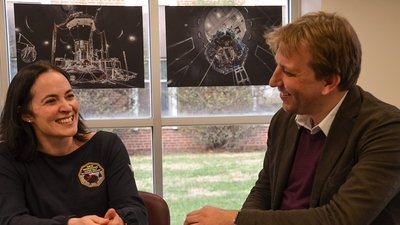
Episode 1 • Jan 13, 2019
On 1 January 2019, Nasa's New Horizons probe notched up another historic first: the first ever Kuiper belt fly-by. Its target was 2014 MU69, a chunk of ice and rock about four billion miles (approximately 6.4 billion kilometres) from Earth, dubbed Ultima Thule, a Latin phrase meaning a distant, unknown region. It is the most distant fly-by in history, and it is believed the data New Horizons gathers will shed new light on the solar system's early days. Chris Lintott reports from the John Hopkins Applied Physics Laboratory in Maryland to bring the latest news and pictures from this extraordinary mission.

Episode 2 • Feb 10, 2019
Ever since we discovered that distant galaxies are racing away from us, there has been a heated debate over just how fast the Universe is expanding. At the beginning of the 21st century, we thought we knew the answer. But now, two very different viewpoints have emerged. And they are dividing the scientific community. The Sky at Night meets leading astronomers and cosmologists on both sides of the debate. Which team has the right answer? Or could both teams be right? If so, we may need to rethink everything we think we know about the Universe.

Episode 3 • Apr 14, 2019
Marsquake! This month's episode follows Insight, NASA’s latest mission to the Red Planet, as it goes in search of the secrets buried deep below Mars’s surface. By listening for tremors caused by Marsquakes and meteor strikes, scientists hope to reveal how the planet was formed, why its fate was so different from the Earth and whether the planet is dead or alive. The programme also says a heartfelt goodbye to Opportunity, the rover that explored the surface of Mars for more than 14 years until it was engulfed by a dust storm last year.

Episode 4 • May 12, 2019
The team reveals how the first picture of a supermassive black hole was captured. The photograph of the hole at the heart of the M87 galaxy was released in April.

Episode 5 • Jun 09, 2019
In the first of two programmes to commemorate the 50th anniversary of the Apollo Moon landings, the Sky at Night team take a look at the latest plans to return to the Moon. Recently, China, Israel and India have all sent major missions to the Moon. The Europeans and Americans are planning to build a space station in permanent orbit around the Moon. And NASA has just announced that they plan to land astronauts on the Moon’s surface within five years. It all suggests that we are on the verge of a new golden age in lunar exploration.

Episode 6 • Jul 14, 2019
To celebrate the 50th anniversary of the Apollo mission to put a man on the moon, The Sky at Night looks back through the archives to tell the story of how the BBC reported the moonshot, with some very special guests. Scientist John Zarneki discusses the huge scientific and engineering challenge. The first British astronaut, Helen Sharman, reveals just how accurate the predictions and preparations for life in space were. And writer and broadcaster James Burke - who reported the whole amazing story at the time - explains why Nasa loved the BBC and how he gained access to the command module for an episode of Tomorrow’s World.

Episode 1 • Jan 12, 2020
The Sky at Night team go back to basics to show you how to enjoy the night sky, wherever you are. It doesn’t matter if you live in a city or in the countryside, if you have a telescope, a pair of binoculars or just your eyes to look with. Pete explains why the night sky changes and joins a group of novice stargazers to talk about the best ways to introduce newcomers to the night. Chris ventures onto a roof in Oxford and marvels at the moon through binoculars, and Maggie goes back to her childhood telescope-making class to talk basic telescope essentials. Curious about the night sky but don’t know where to start? Want to know how to make the most of your new telescope? This is the programme for you!

Episode 2 • Apr 12, 2020
The Sky at Night discovers how Esa's solar orbiter was built, and how it will protect itself against the sun's searing heat and investigate its mysteries.

Episode 3 • May 10, 2020
The Sky at Night celebrates its 800th episode by showing how you can still explore space even when confined to your home by the coronavirus lockdown. Plus a new arrangement of the show's theme tune.

Episode 4 • Jun 14, 2020
The Sky at Night team explore a changing world. Maggie Aderin-Pocock interviews astronaut Jessica Meir, who returned from 205 days on the International Space Station to a world she barely recognised. They also discuss Jessica’s experiments in micro-gravity, growing lettuce in space and the first all-female spacewalk. Chris Lintott meets the astronomer who recently announced the discovery of the closest black hole to Earth. Pete Lawrence photographs the dark side of Venus and Lucie Green investigates whether Elon Musk’s constellation of Starlink satellites are ruining the night sky.

Episode 5 • Jul 12, 2020
The Sky at Night team explore the life and death of stars, including the dimming of Betelgeuse and the drawings that pre-date the telescope but which can predict solar activity.

Episode 6 • Aug 09, 2020
Mars has fascinated us ever since we first looked up to the heavens. We have imagined alien civilisations, exotic life forms and even dreamed of travelling there ourselves. But after the first probes flew past the Red Planet, and with each subsequent mission that has orbited or landed on its surface, that vision has changed. We’ve come to realise that the planet is, most likely, dead. But that hasn’t dimmed our hopes for finding evidence of past life. And our desire to travel there and colonise the Red Planet still endures. From the very beginning of this exploration, the BBC has recorded our shifting perception of Mars. Since the Sky at Night started broadcasting in 1957, there have been over 50 episodes devoted to Mars and more than ten episodes of Horizon. This programme looks back at that coverage.

Episode 1 • Jan 17, 2021
Maggie Aderin-Pocock and Chris Lintott look back at some of the biggest stories featured on the programme in 2020, with the help of special guests who have chosen their favourite moments. From the launch of Solar Orbiter to the discovery of phosphine on Venus, the team relive the astronomy highlights of a highly unusual year.

Episode 2 • Apr 11, 2021
In February 2021, orbiters from China and the UAE settled into their positions above Mars, and Nasa’s Perseverance rover touched down on its surface. Maggie Aderin-Pocock reviews the astonishing footage the rover has already sent back, and talks with its legendary chief designer Adam Seltzer about the challenges of missions to the red planet.

Episode 3 • May 09, 2021
The Gaia space telescope is not just helping scientists create the ultimate star map of the Milky Way. It is also showing our galaxy's past and how it will change in the future.

Episode 4 • Jun 13, 2021
The Sky at Night team visit the companies spearheading the boom in Britain's space industry, a sector with an annual income of £16.4bn and which employs over 45,000 people.

Episode 5 • Jun 19, 2021
Chris and Maggie dive into the archives to discover how the hunt for extra-terrestrial life in the universe has been reported by the BBC over six decades.

Episode 6 • Aug 08, 2021
Juno, Nasa's mission to Jupiter, is still gathering data on the gas giant, a decade after it was launched.

Episode 1 • Jan 09, 2022
The team explores light pollution and what might be done to mitigate its effects.

Episode 2 • Apr 11, 2022
New scientific methods to discover exoplanets, and how the winter dakness in Antarctica helps here.
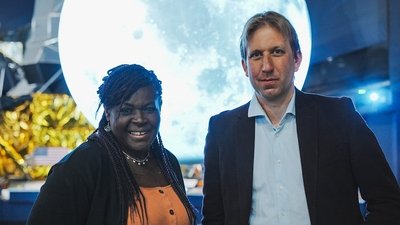
Episode 3 • May 09, 2022
2022 marks the fiftieth year since an astronaut last stepped on the moon's surface. We look back at the legacy of the Apollo programme and forward to the future of lunar exploration. Maggie and Chris visit the Science Museum in London, where Maggie discovers from space curator Doug Millard that one of the museum's star attractions – Apollo 10's command module – nearly did not make it back to Earth.
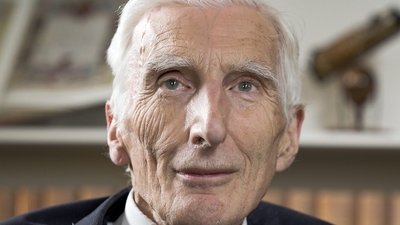
Episode 4 • Jun 13, 2022
Martin Rees is perhaps Britain’s most renowned cosmologist. Now, about to celebrate his eightieth birthday, Lord Rees talks to Chris Lintott about his career in science.

Episode 5 • Jul 11, 2022
The British weather is often the enemy of stargazers up and down the country. A forecast of a couple of hours of cloud cover will disappoint even the most determined amateur astronomers. In this programme, the Sky at Night becomes the 'Sky at Day', providing an alternative range of spectacles to observe and activities to partake in, ideal when the nights are short and the stars are hiding behind the clouds.
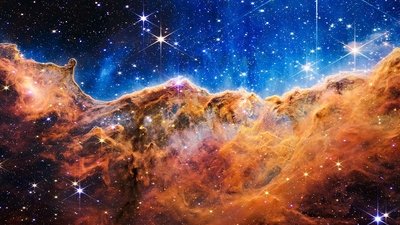
Episode 6 • Aug 15, 2022
On 12 July 2022, the Sky at Night joined the rest of the world to watch as the James Webb Space Telescope released its long-awaited first images. And it didn't disappoint. Stars and galaxies were revealed in such detail that they blew even the most experienced astronomers away. However, as spectacular as these images were, it was the data that they represented that really excited the scientists watching.

Episode 1 • Apr 10, 2023
The Sky at Night team investigate the latest science used in the hunt for extraterrestrial life, including a major mission to Jupiter's icy moons.

Episode 2 • May 15, 2023
The Sky at Night team explores the threat of an asteroid impact on earth and meets the space scientists who are developing methods of planetary defence that sound like the stuff of science fiction.

Episode 3 • Jun 12, 2023
The Sky at Night team investigates the incredible science and engineering helping the UK to blast into space. We are now one of the biggest satellite building nations in the world, and the race is on to be the first company to successfully launch a rocket into orbit from British soil.
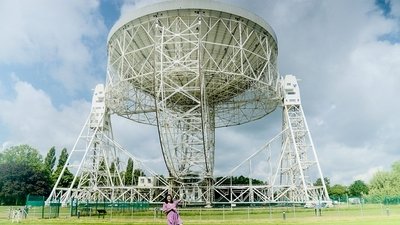
Episode 4 • Jul 10, 2023
For July 2023, the team investigate the controversial world of alien communication. The search for life on other planets is one of the most fascinating subjects in science. But what is less reported is the work being done around the world to determine what happens next.

Episode 5 • Aug 14, 2023
For August 2023, The Sky at Night team investigate the science of black holes and discover the incredible techniques being used to uncover their secrets, and even help us answer bigger questions about our universe. Chris meets Dr Becky Smethurst at the University of Oxford to learn how a black hole forms from the death of a star. He also investigates whether black holes deserve their menacing portrayal in popular culture. He describes what would happen if we got too close to the event horizon and how black holes might actually play a role in lighting up the universe. Maggie explores how scientists are trying to understand more about black holes by meeting Dr Tessa Baker, who works on LIGO. The Laser Interferometer Gravitational-Wave Observatory is one of the world’s largest physics experiments and is not your usual type of observatory; instead of looking - it listens. The next observation run has just started, and Maggie learns what they are hoping to find.
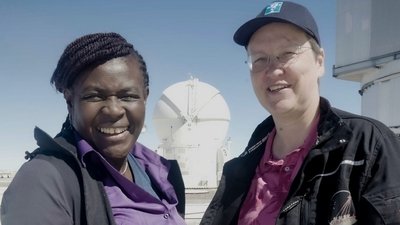
Episode 6 • Sep 11, 2023
The Very Large Telescope has been responsible for some of the greatest astronomical breakthroughs. For September 2023, the team travels to the heart of the Atacama to explore one of the most advanced observatories in the world, a site at the forefront of astronomy.

Episode 1 • Apr 08, 2024
The Sky at Night is back for a brand new series, and this month it is delving into Nasa’s OSIRIS-REx mission, which last year brought back a sample from the near-Earth asteroid Bennu. The team are finding out what it takes to analyse the tiny pieces of space rock, what they can tell us about how Earth became the planet it is today and may even tell us about the origins of life!
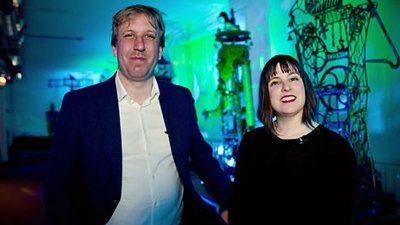
Episode 2 • May 13, 2024
Total solar eclipses, like the one seen last month in North America, allow us to see details of the sun that can’t be seen at any other time. So, this month, The Sky at Night team looks at how scientists are creating eclipses on demand and discovering the secrets that can be revealed hidden in that starlight, including habitable planets like our own.
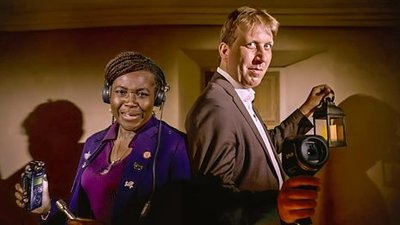
Episode 3 • Jun 10, 2024
This month, The Sky at Night has a spooky twist. Across the universe, there are hidden objects that we can’t see, but astronomers and scientists still believe they’re out there. To find out how we know that these mysterious objects exist, the team are going ghost-hunting. Cosmic ghost-hunting.

Episode 4 • Jul 08, 2024
In July 2022, the James Webb Space Telescope released its first images. They were visually stunning, and it was clear they provided more detail of stars, galaxies and planets than ever before. But for the scientists waiting on the data, this was just the beginning of their journey to discover what the new telescope would reveal. Since then, they have been working hard and publishing papers on all the data JWST has been sending back.
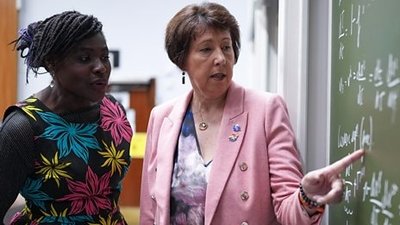
Episode 5 • Aug 12, 2024
In this Sky at Night special, the team talk to Dr Nicola Fox, NASA’s head of science, whose life began in the UK. Presenter Chris Lintott chats to Nicky about her early years growing up in Hitchin in Hertfordshire and discovers how she fell in love with the stars.
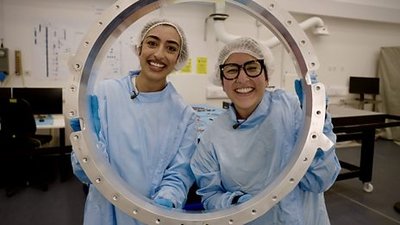
Episode 6 • Sep 09, 2024
The Sky at Night is embarking on a journey into the future as we explore how space will revolutionise life on Earth over the next 50 years. As humanity's reach extends into the cosmos, we face unprecedented challenges, from redefining what it means to be an astronaut to confronting our own space junk and dealing with the impact of life in space on our Earth-adapted bodies. With privileged early access to a groundbreaking new report from the Royal Society on humanity’s future in space, the Sky at Night team are on a mission to find our destiny among the stars – our place in space.

Episode 1 • Apr 14, 2025
The team explore one of the biggest stories in space news, the ‘city killer’ asteroid 2024 YR4. How well did the planet respond to this potential natural disaster?

Episode 2 • May 12, 2025
The Sky at Night team explore what the latest research is revealing about Mars. Could life once have thrived there? And will a return trip to our neighbouring planet ever be possible?

Episode 3 • Jun 09, 2025
The team celebrate the 350th anniversary of the Royal Observatory, recreating history at a special dinner party, where they are joined by a glittering line-up of science communicators.

Episode 4 • Jul 14, 2025
The team explore one of the newest areas of modern astronomy, the search for exoplanets, the distant worlds that orbit stars beyond our own solar system.

Episode 5 • Aug 15, 2025
The team delve into the enigmatic world of pulsars and hear the inspiring story of their discoverer, Dame Jocelyn Bell Burnell, direct from the subject herself.
Recommendations
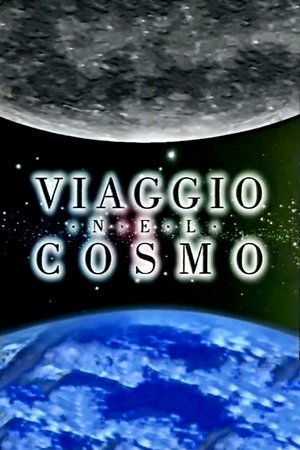
1998 • TV Show
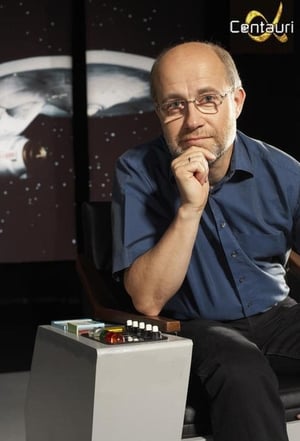
1998 • TV Show
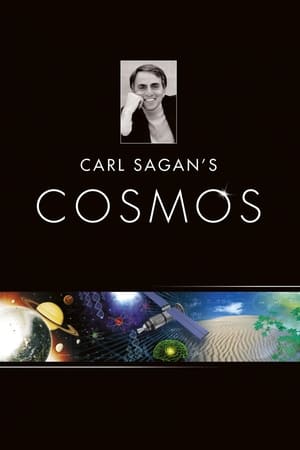
1980 • TV Show

2023 • TV Show
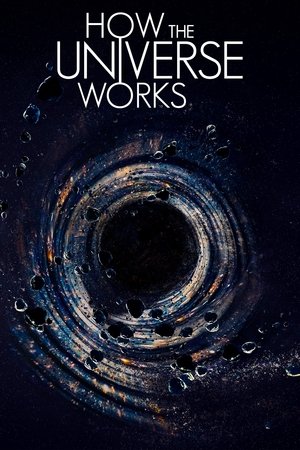
2010 • TV Show
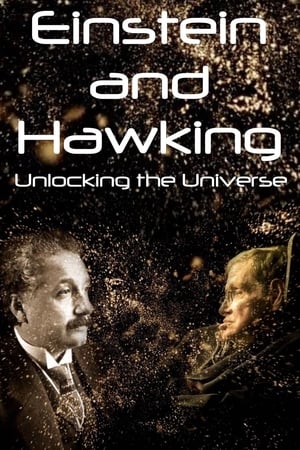
2020 • TV Show
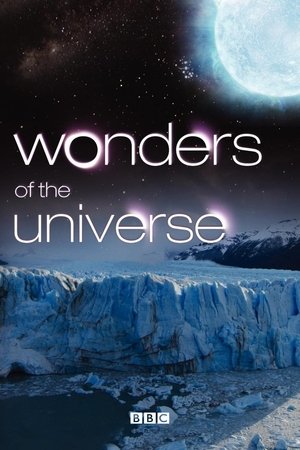
2011 • TV Show
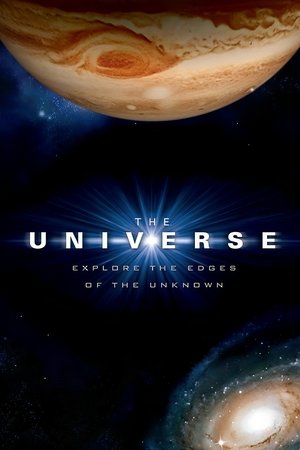
2007 • TV Show
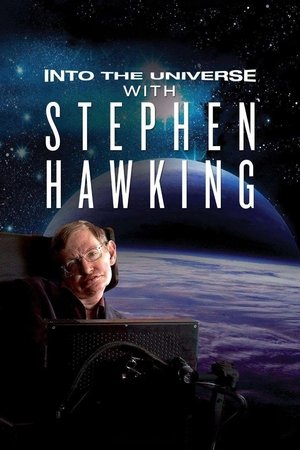
2010 • TV Show
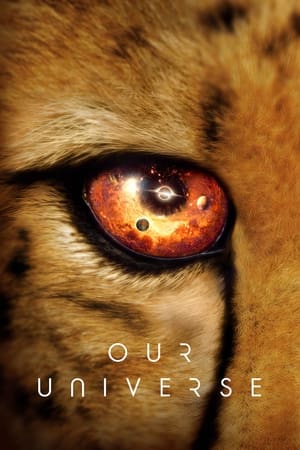
2022 • TV Show
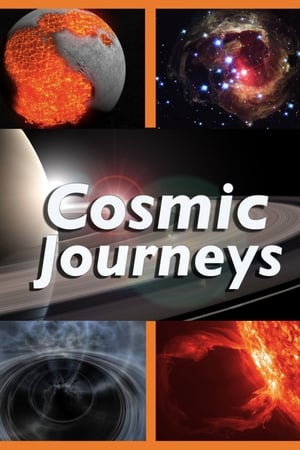
2009 • TV Show
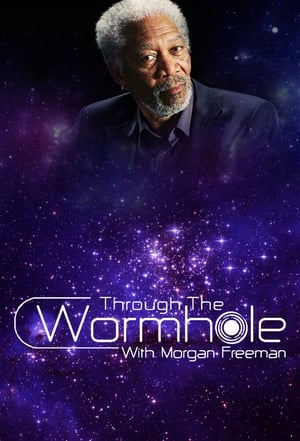
2010 • TV Show